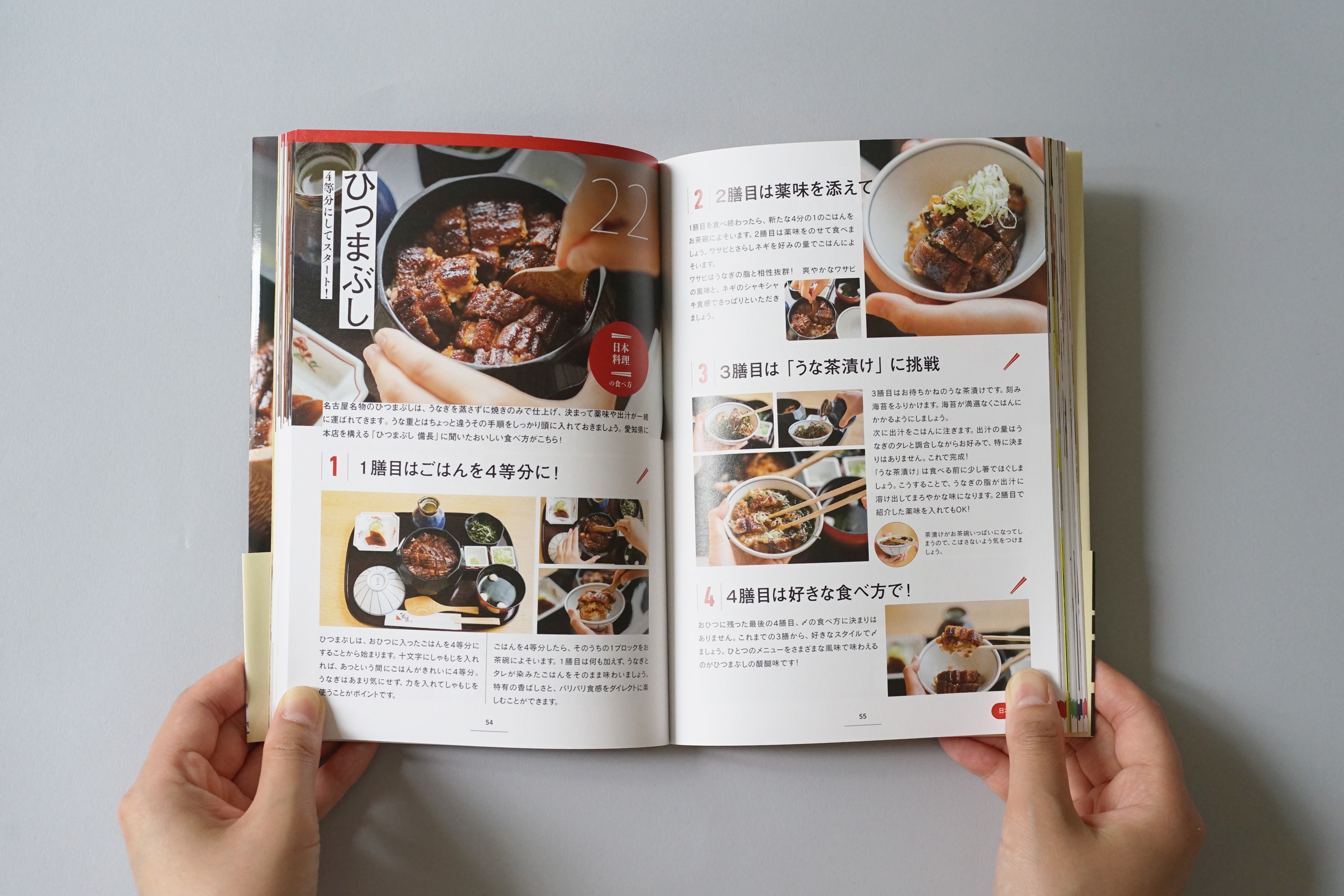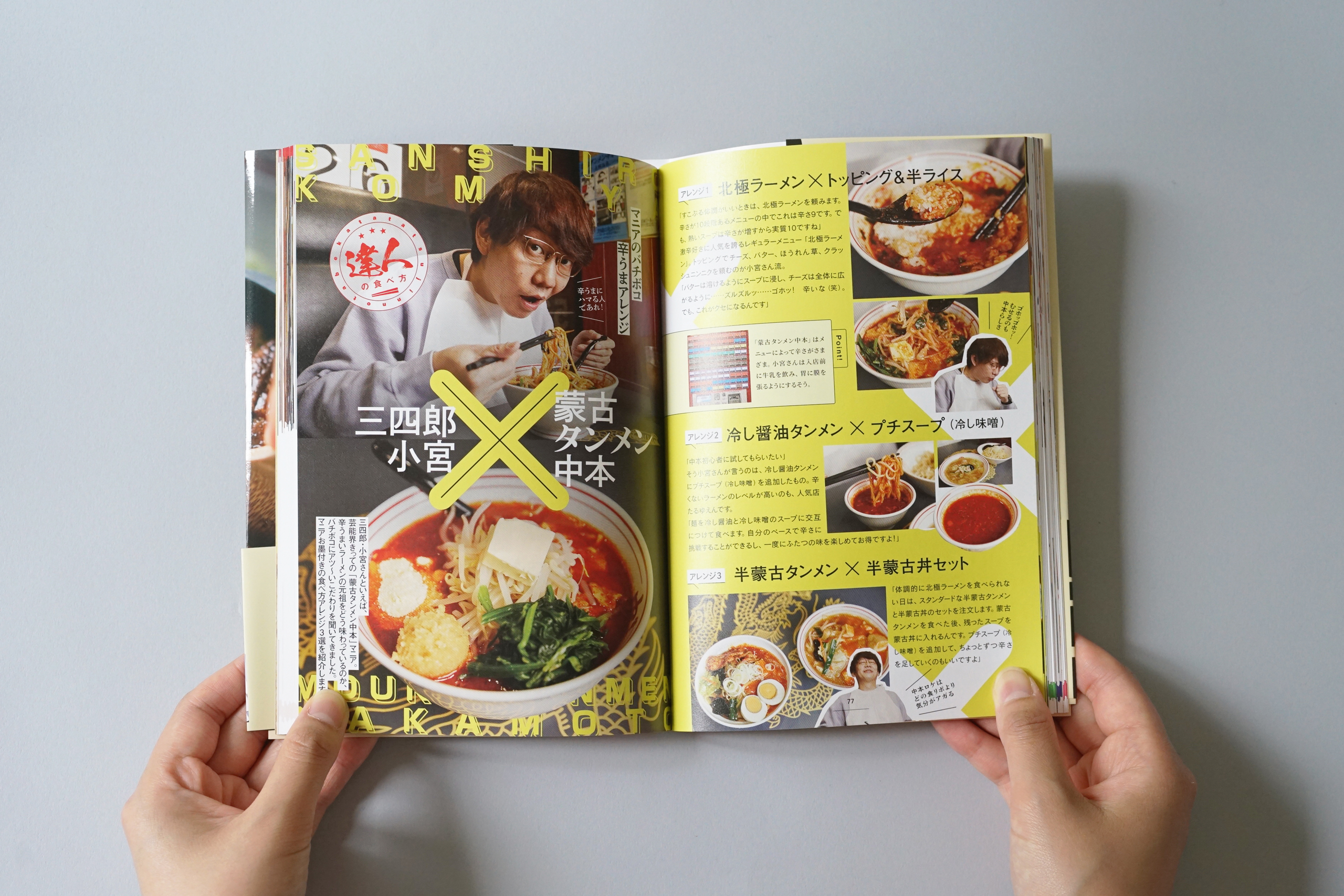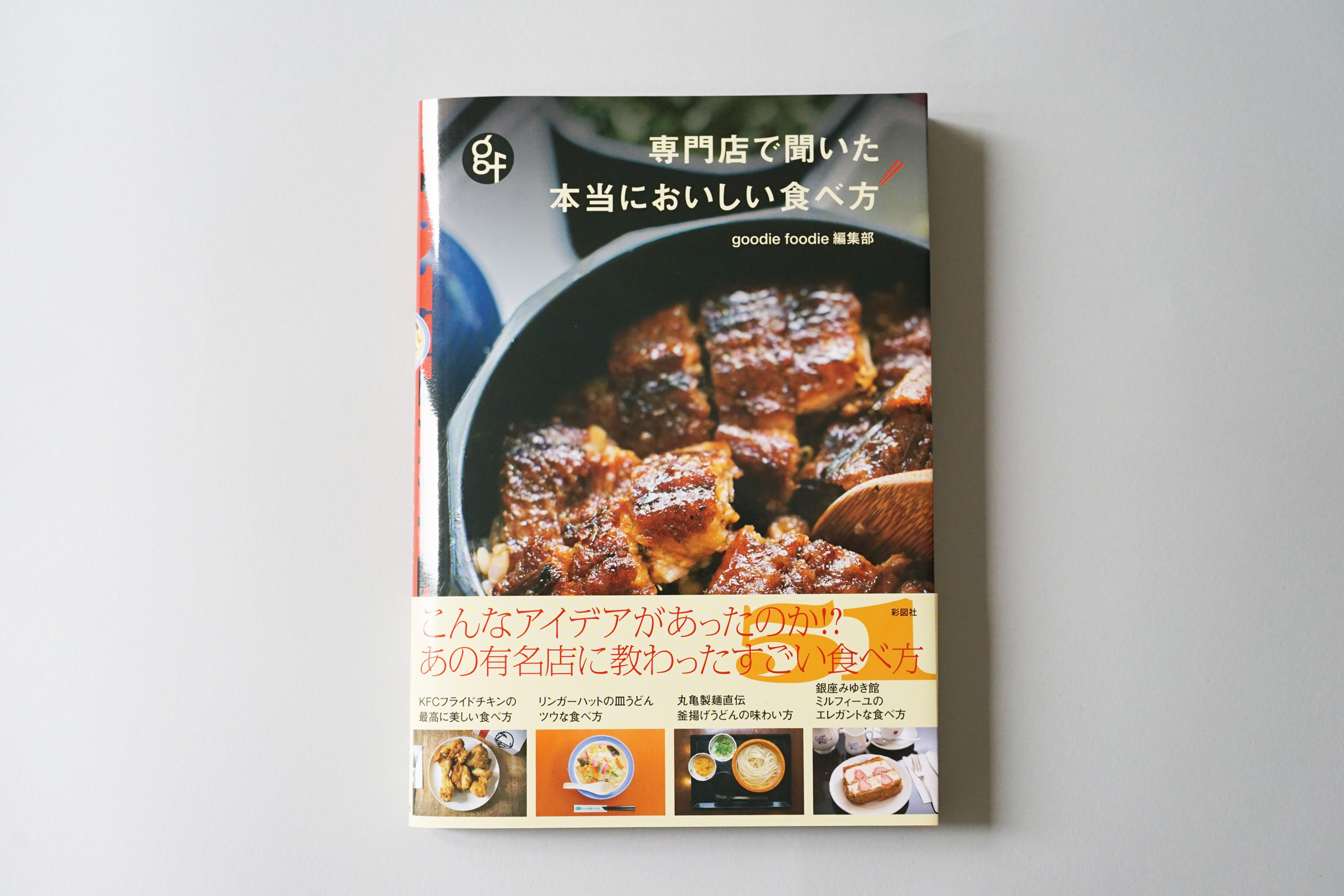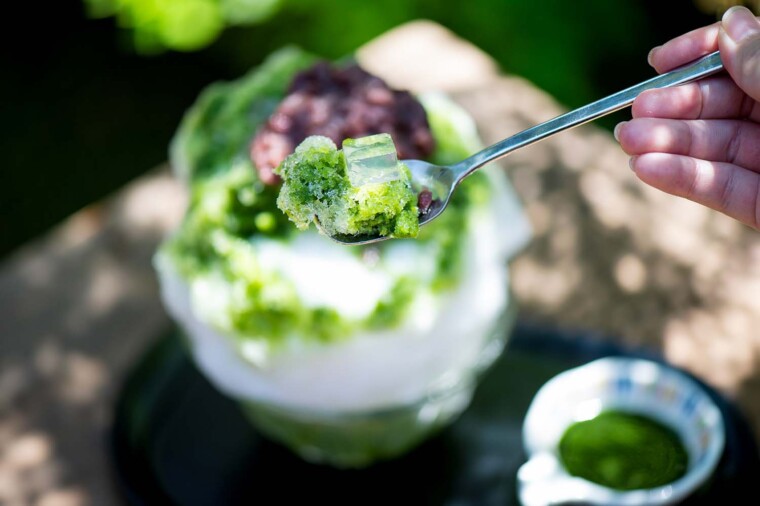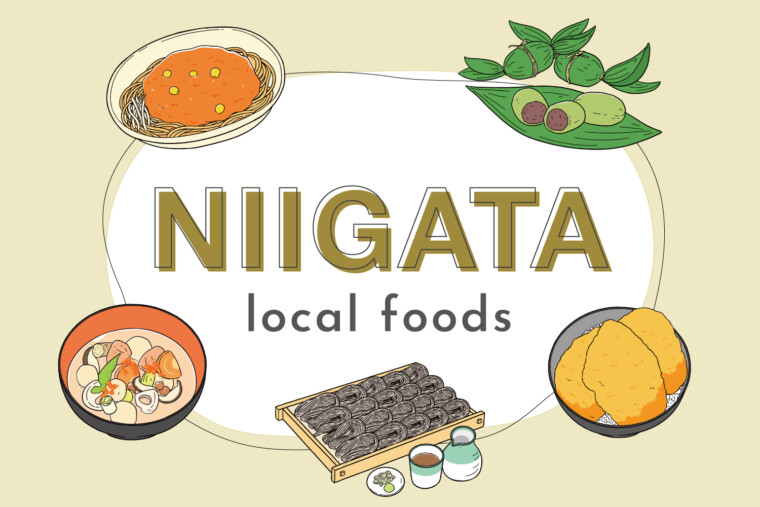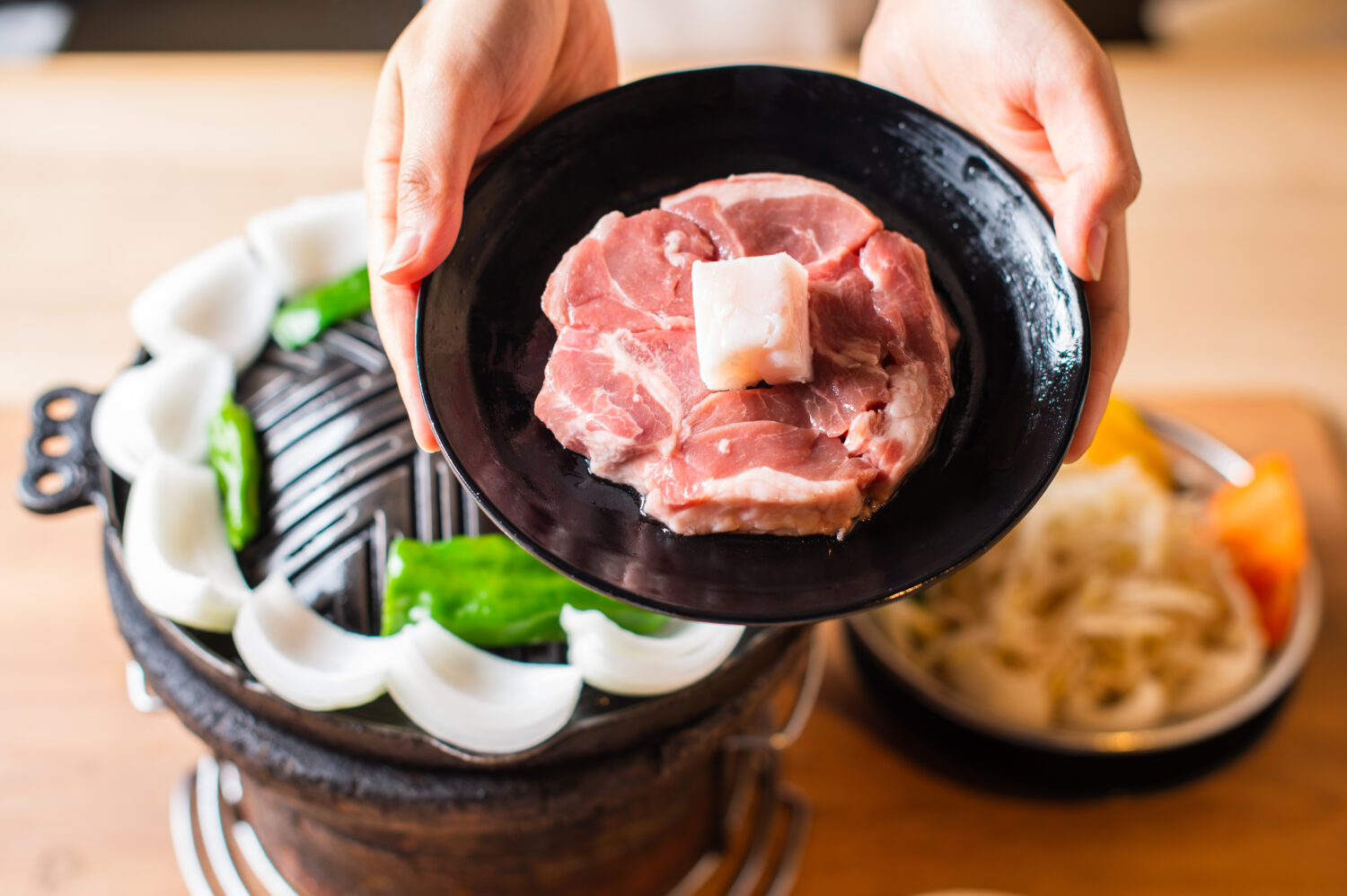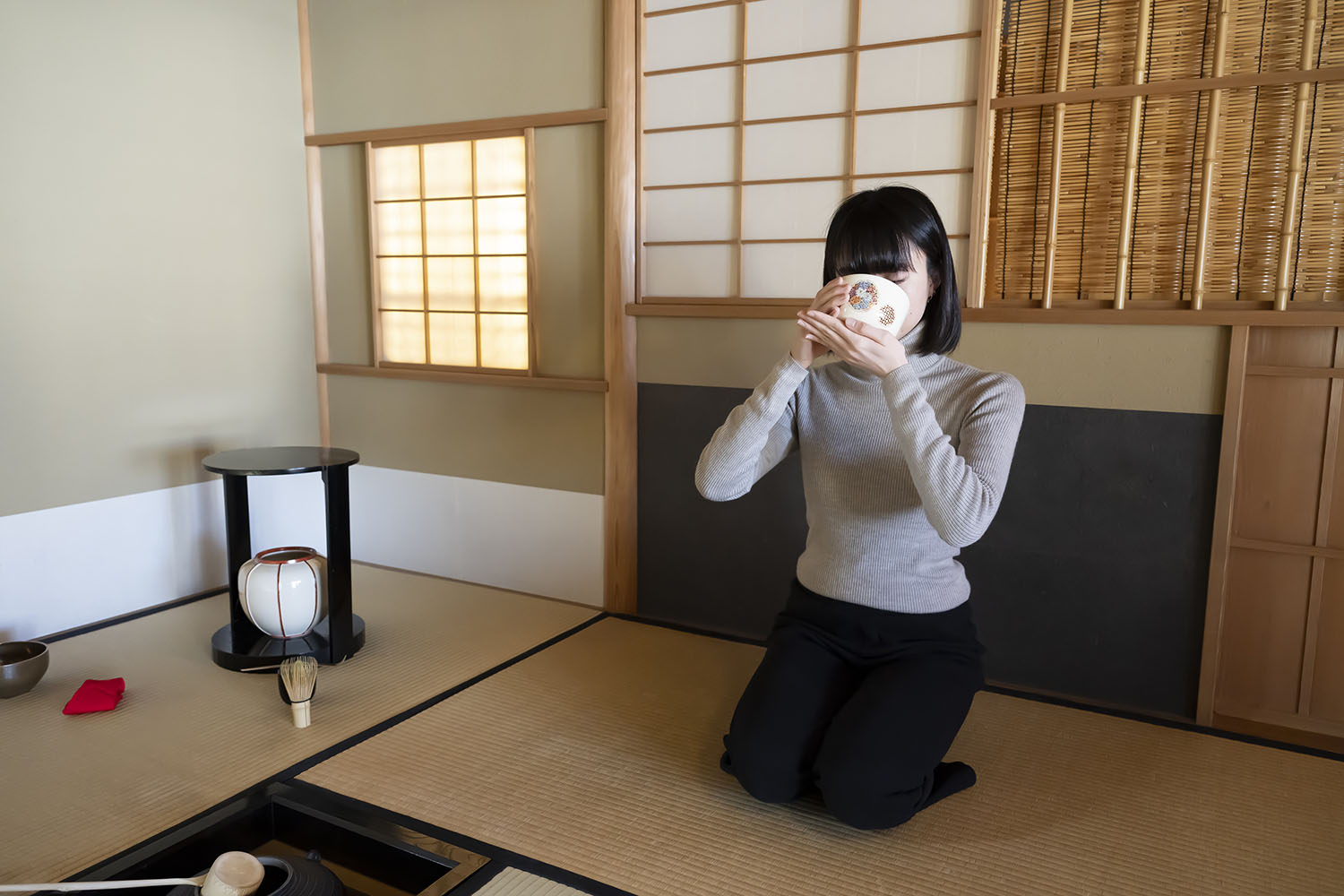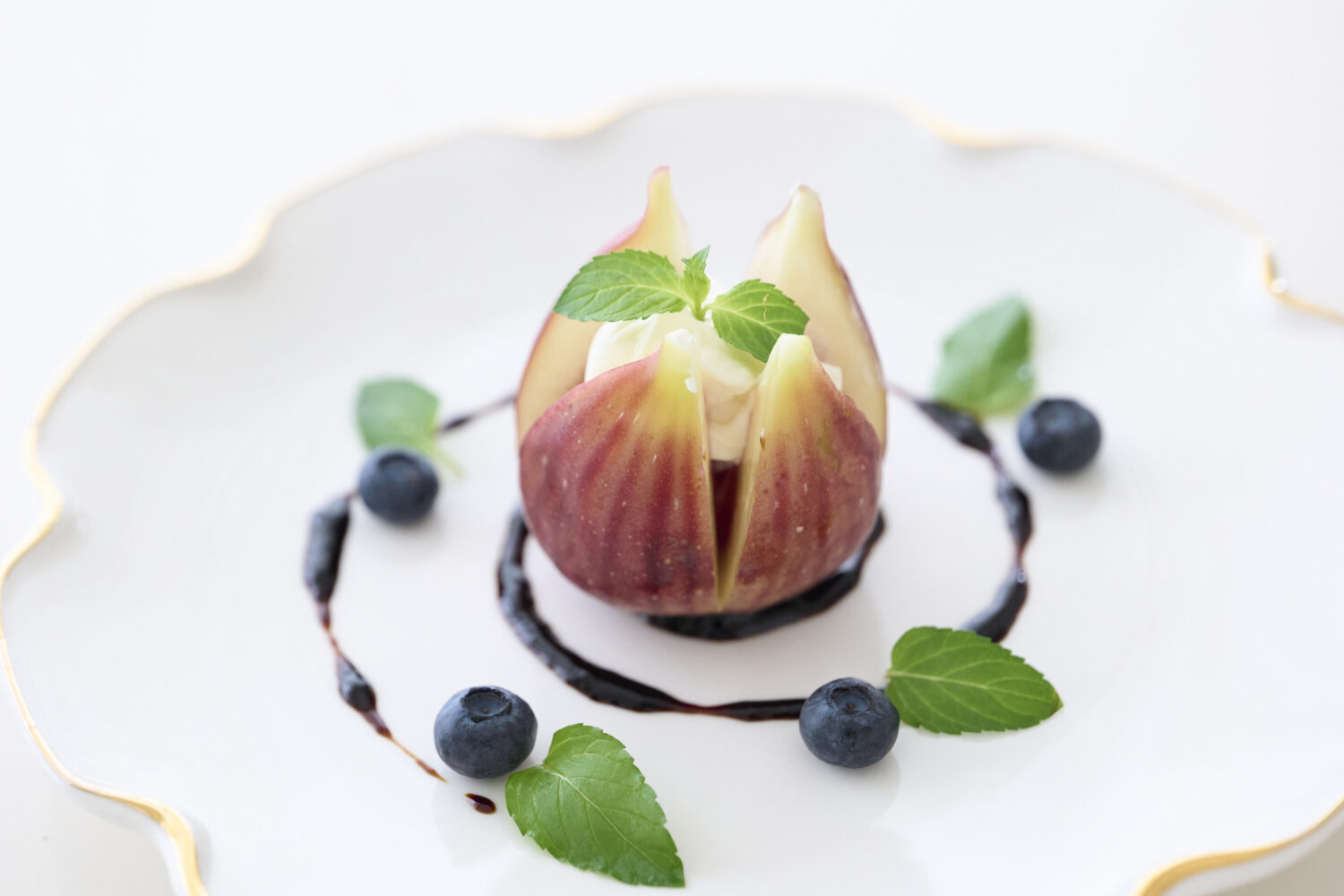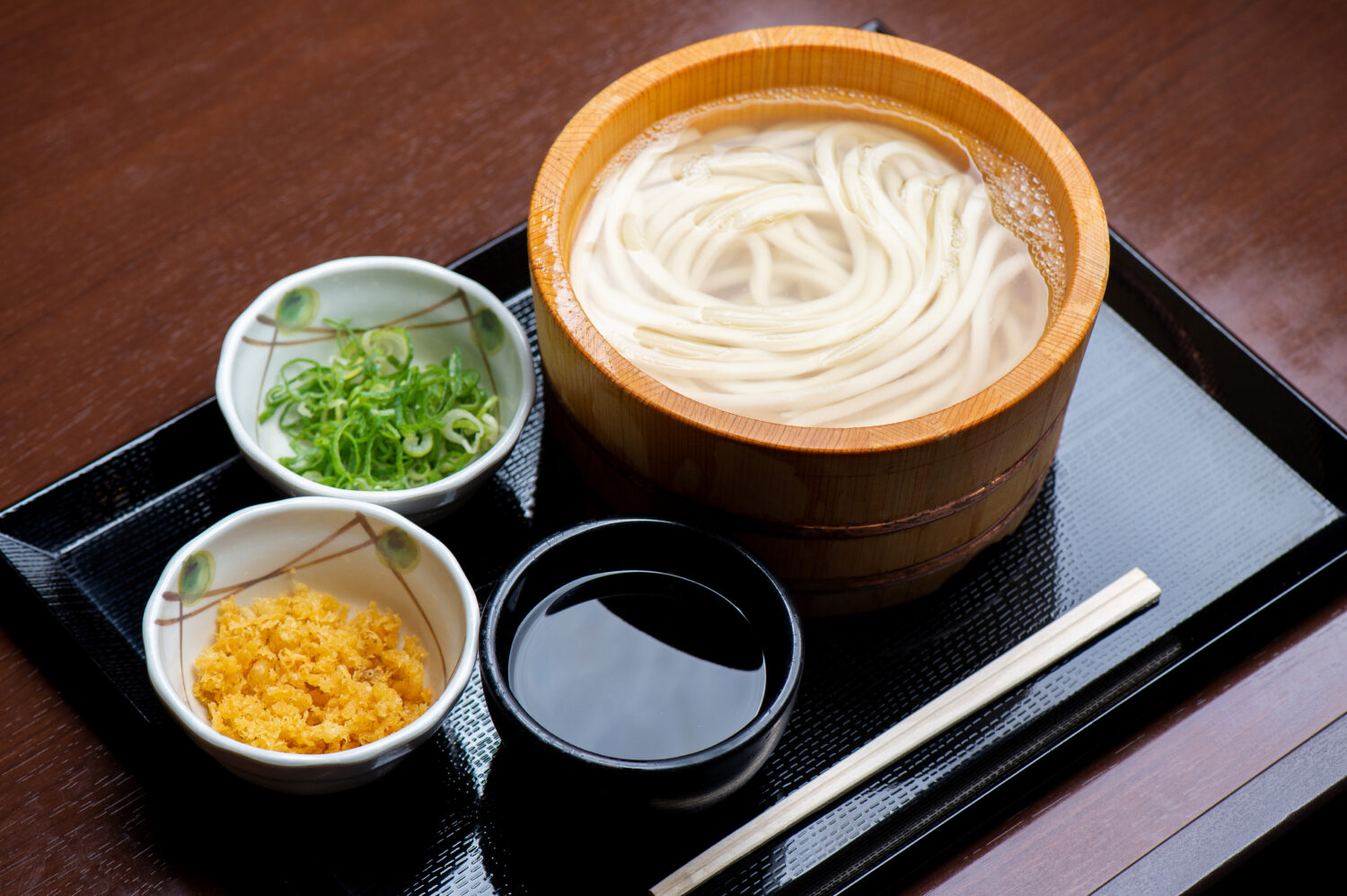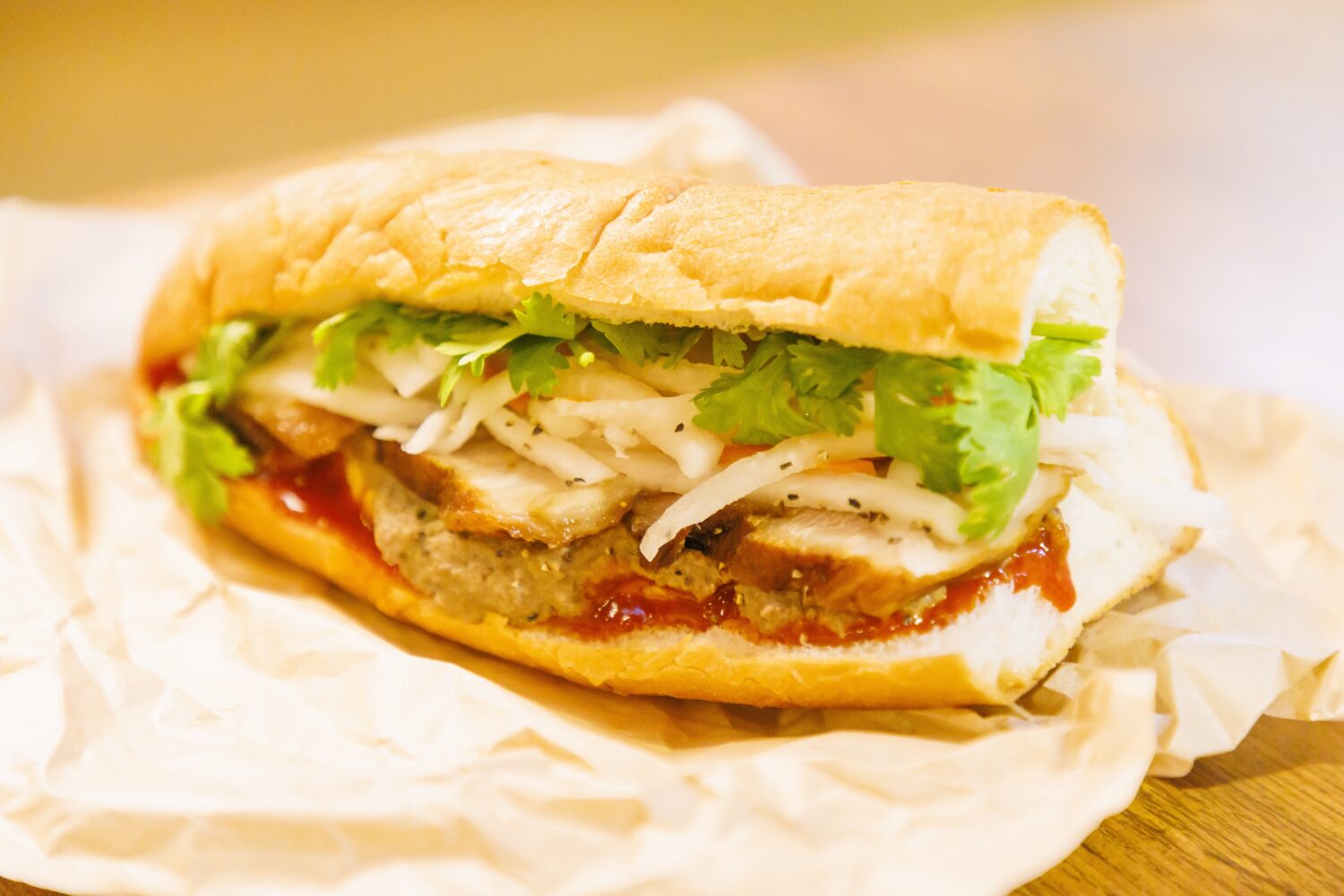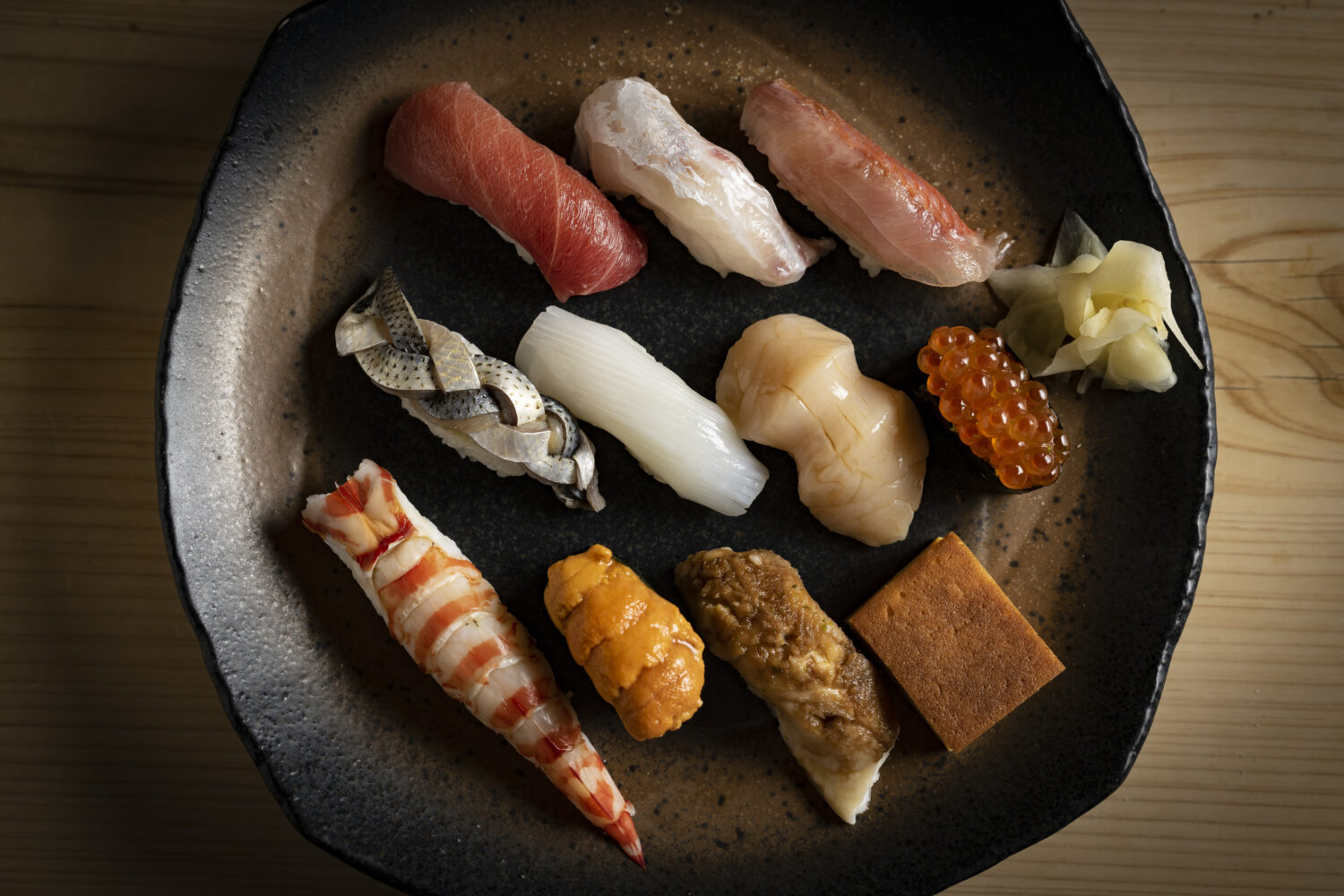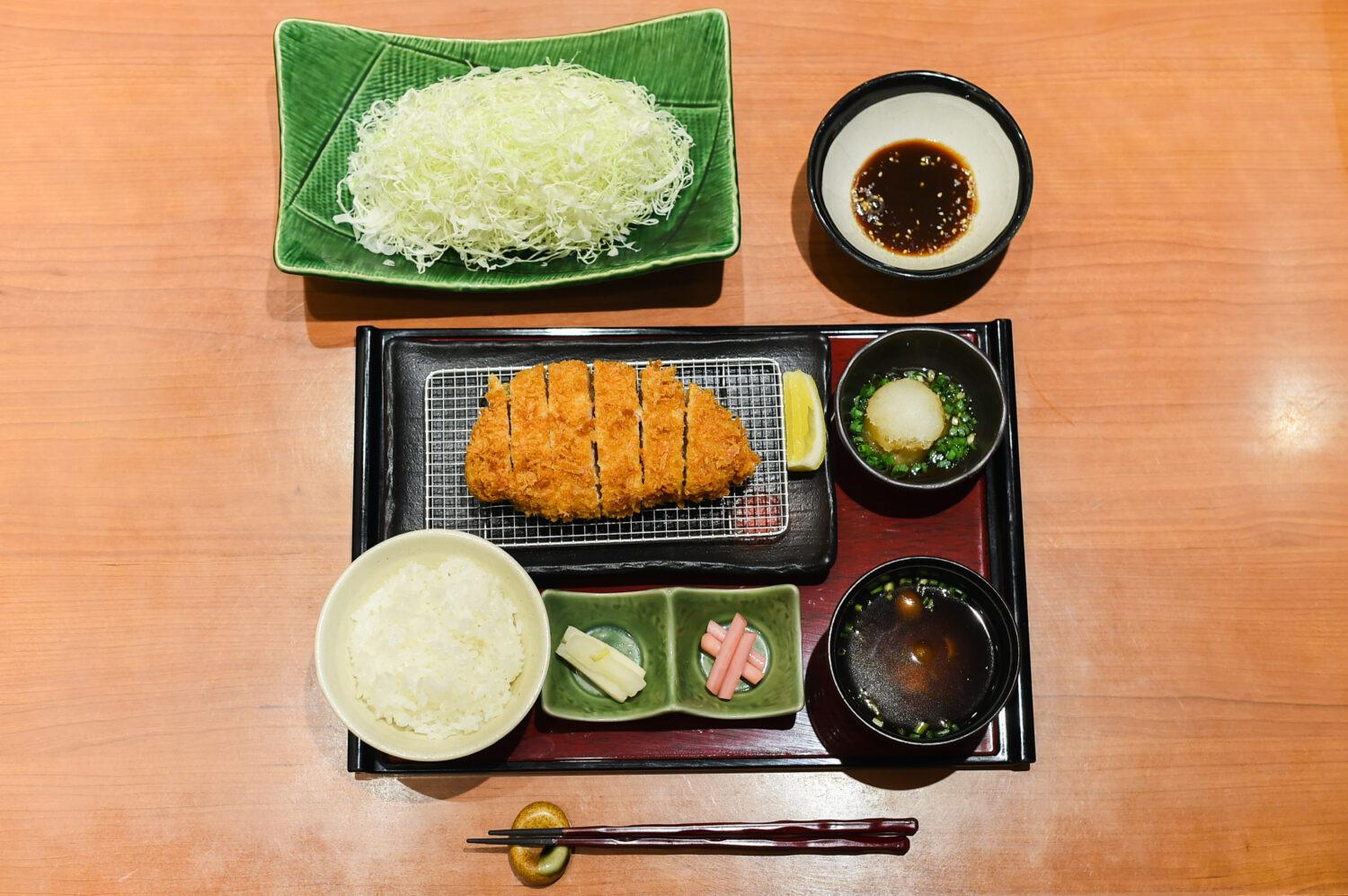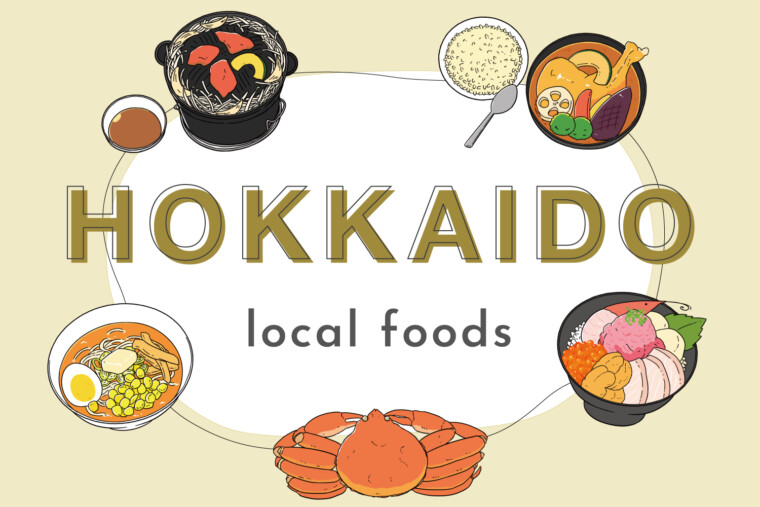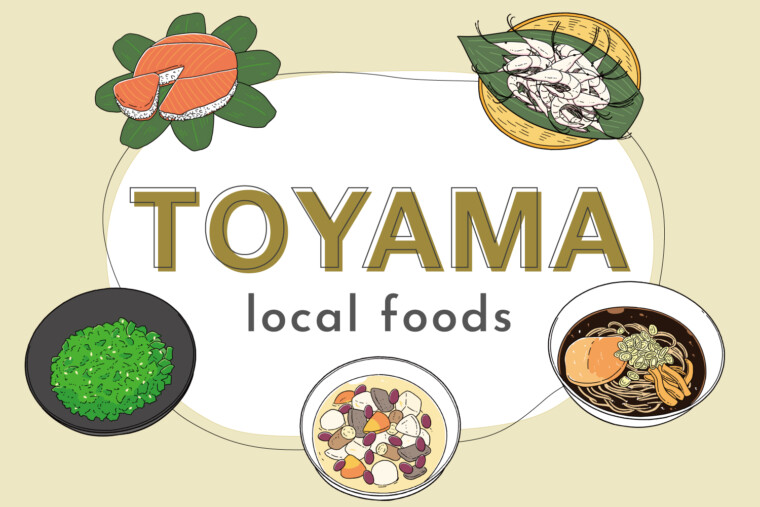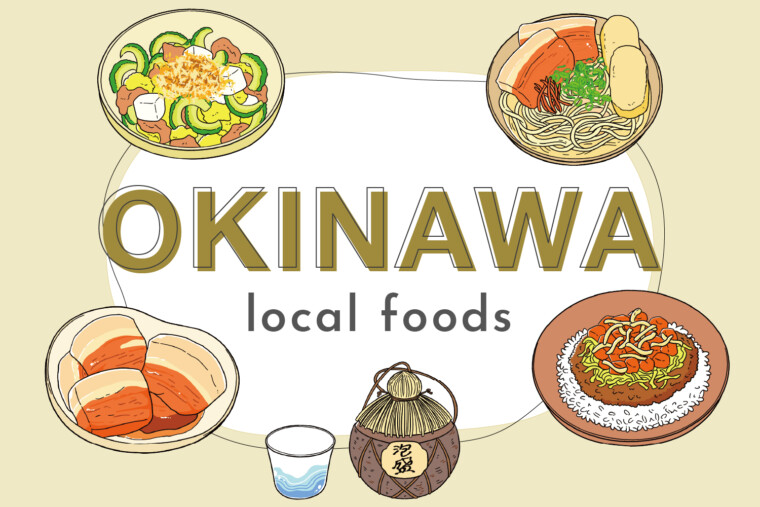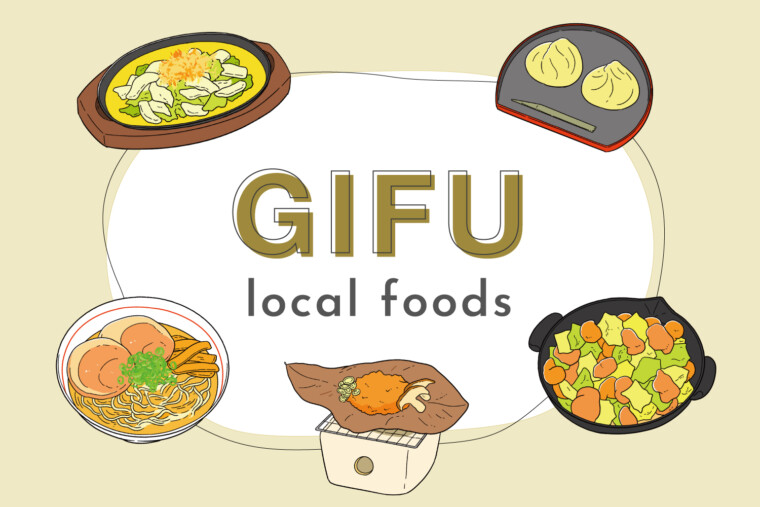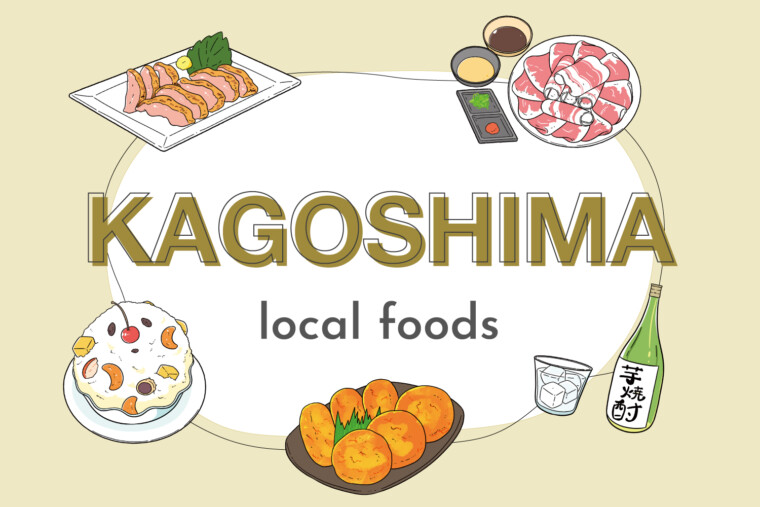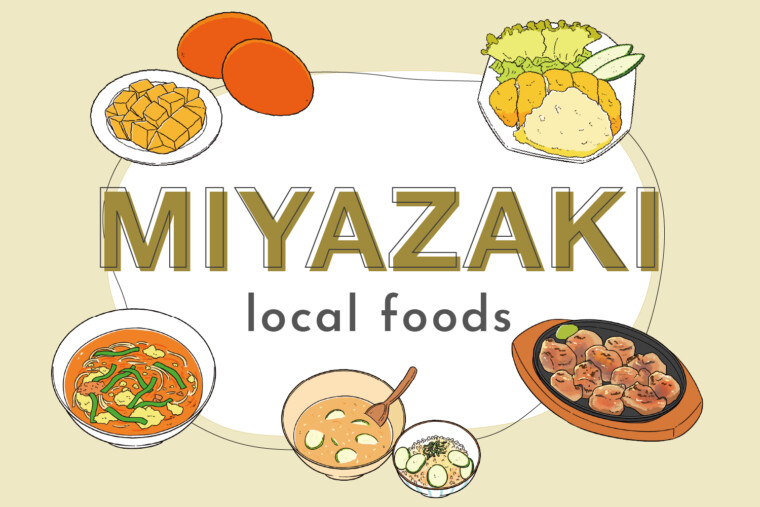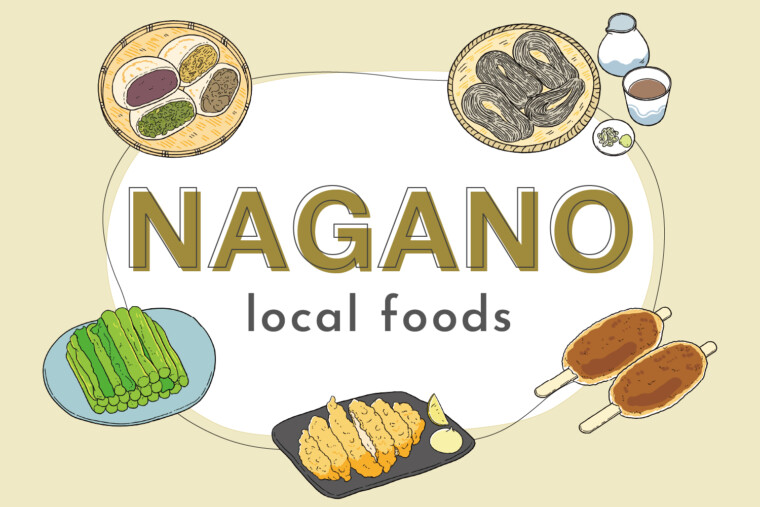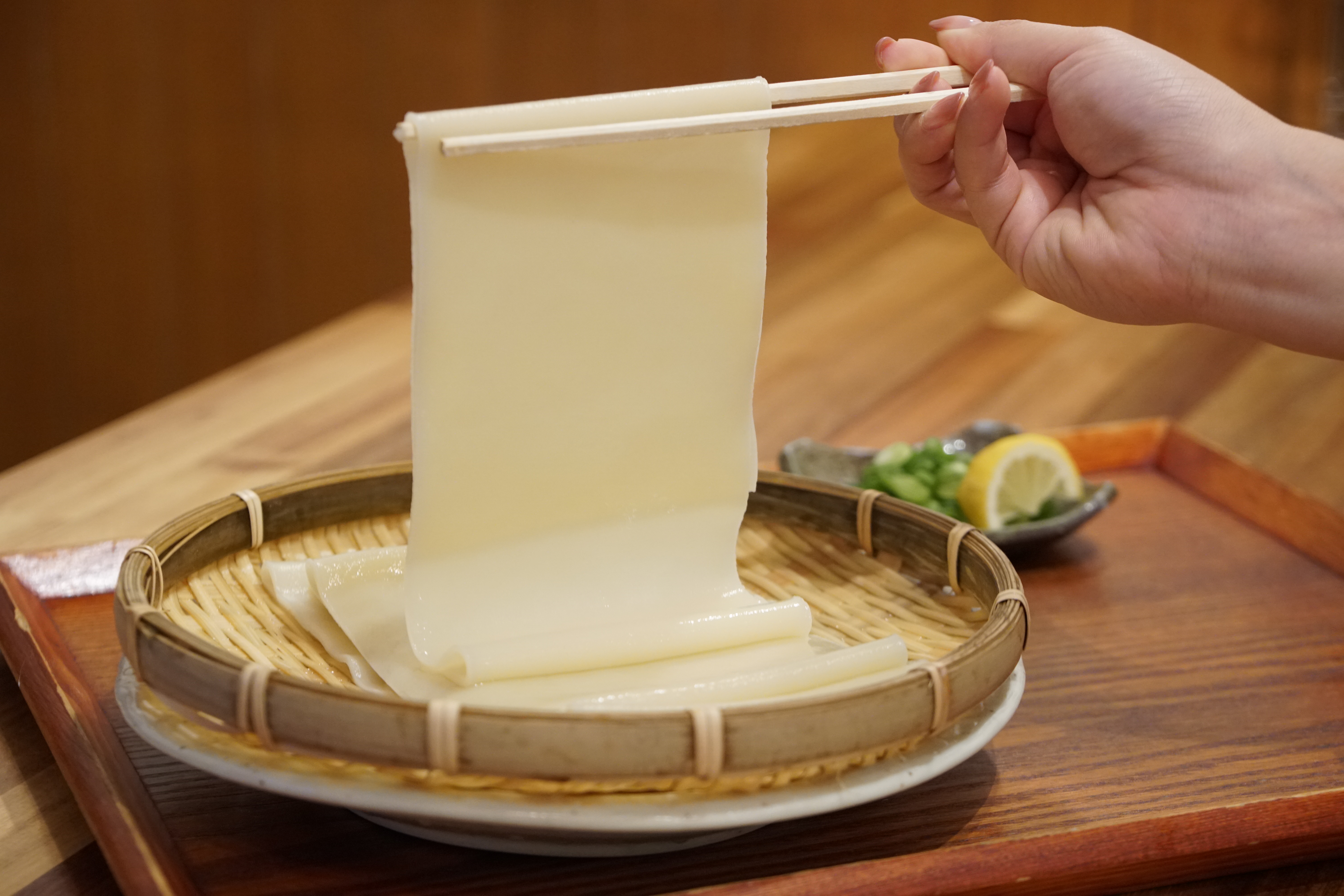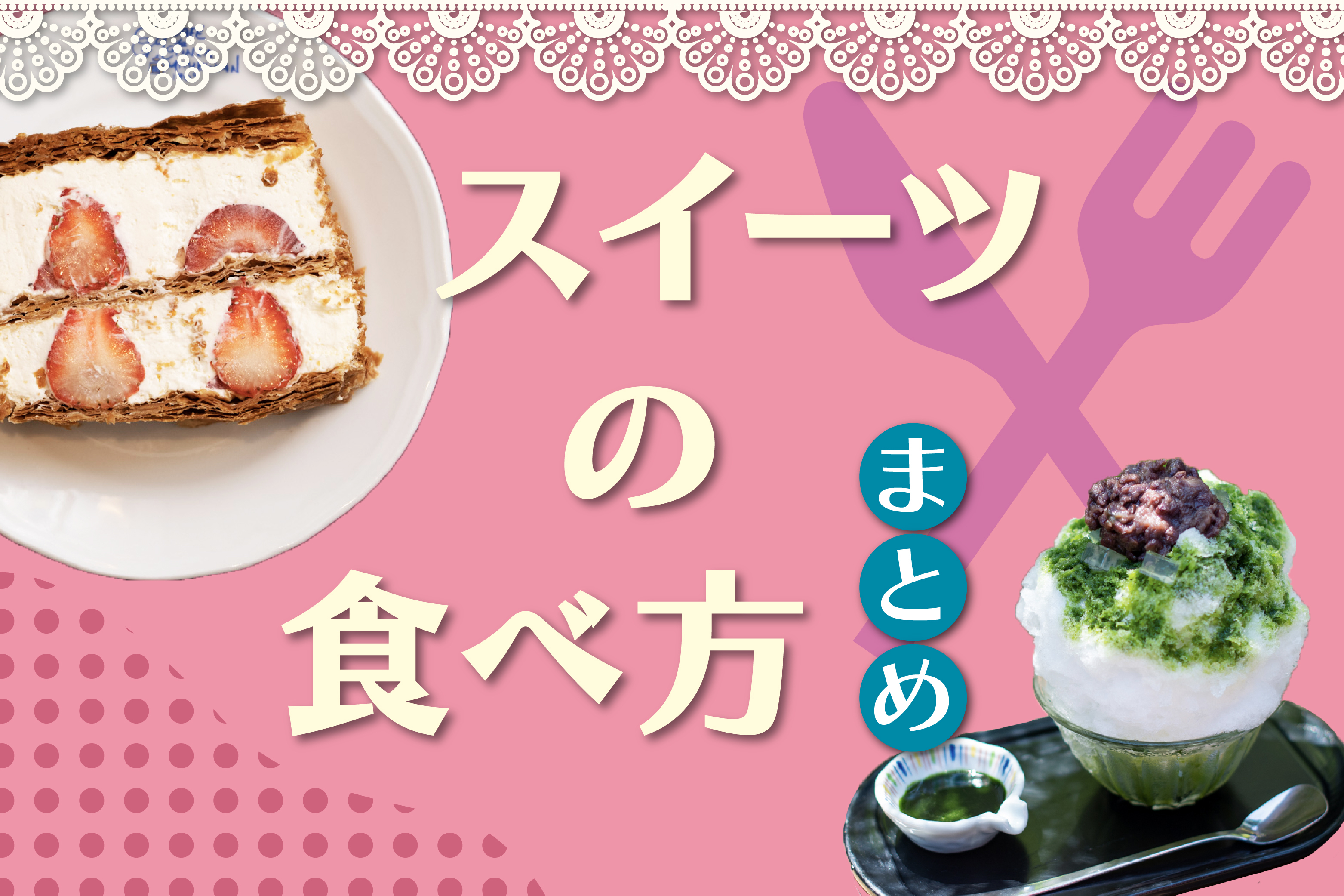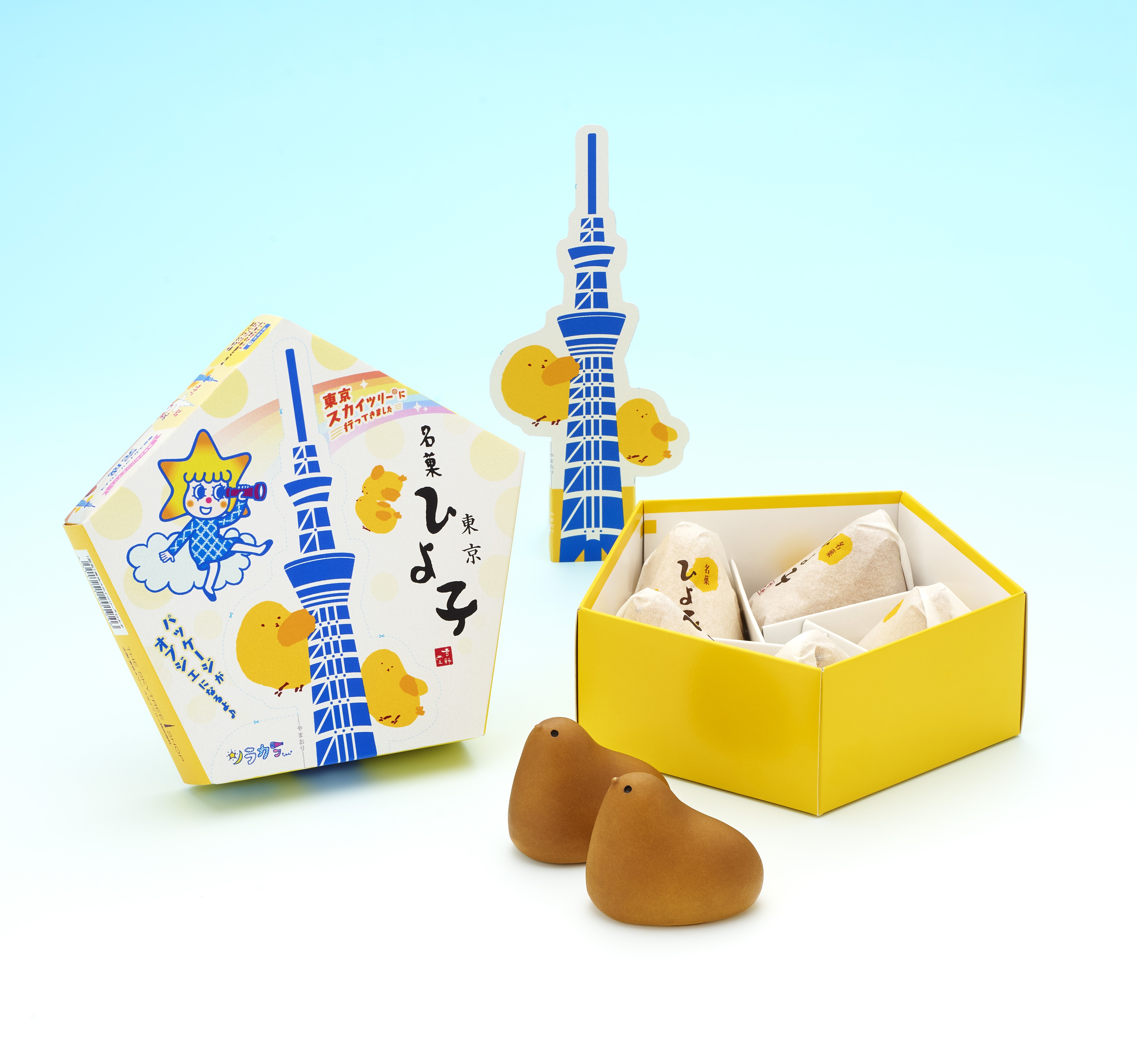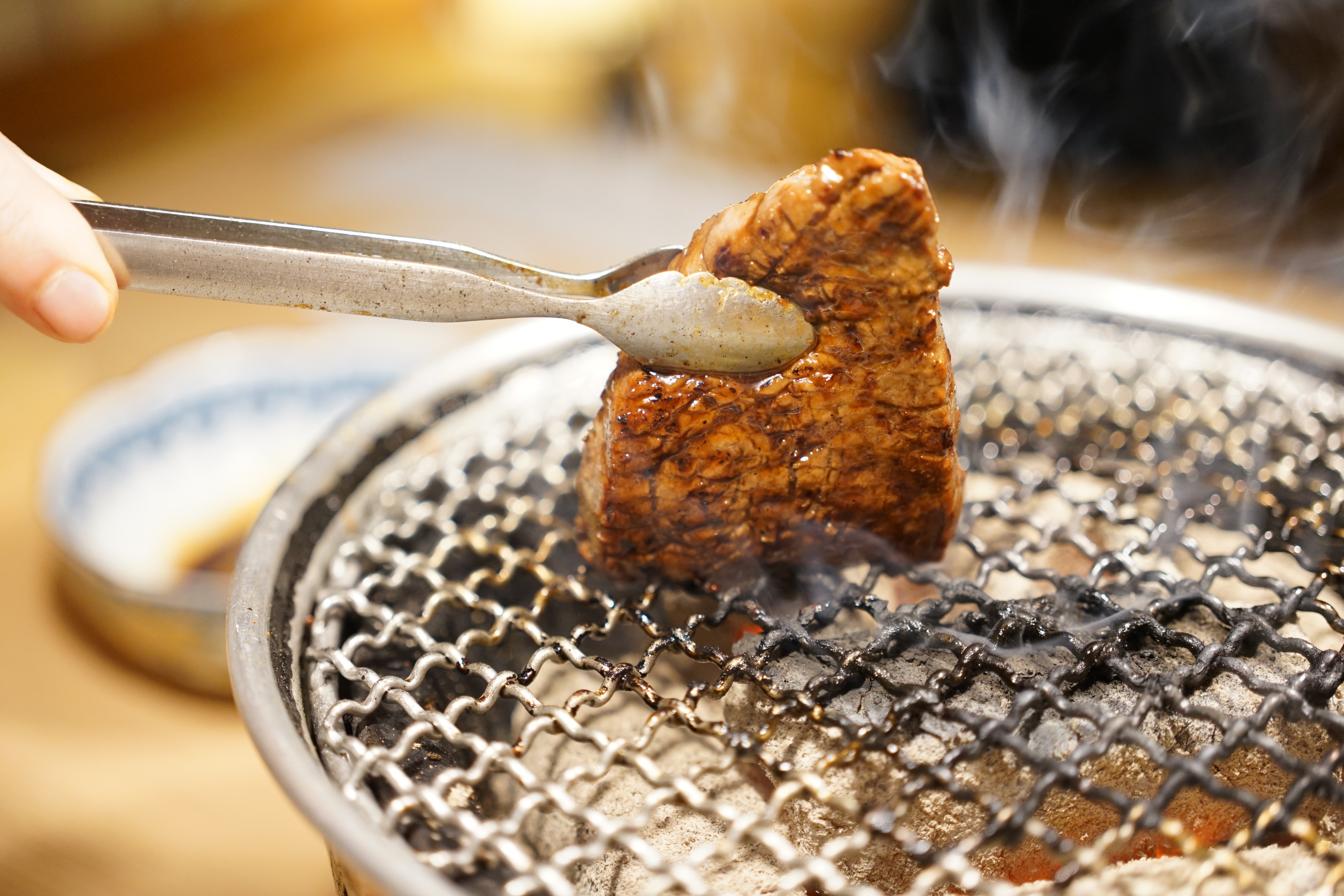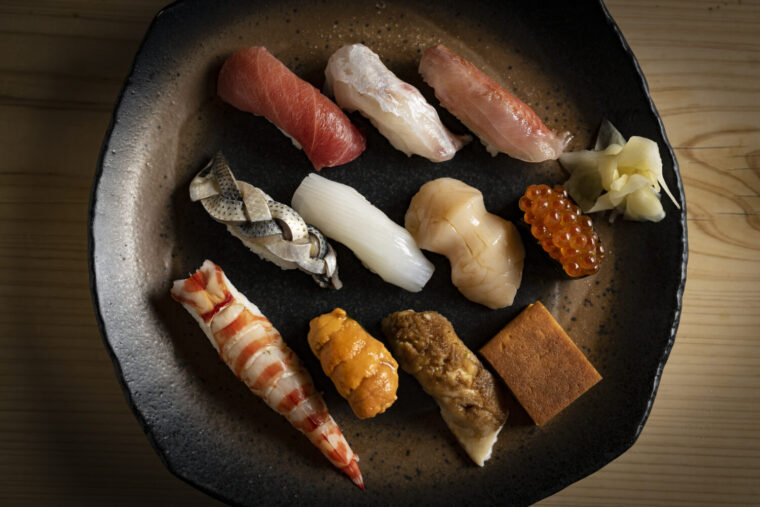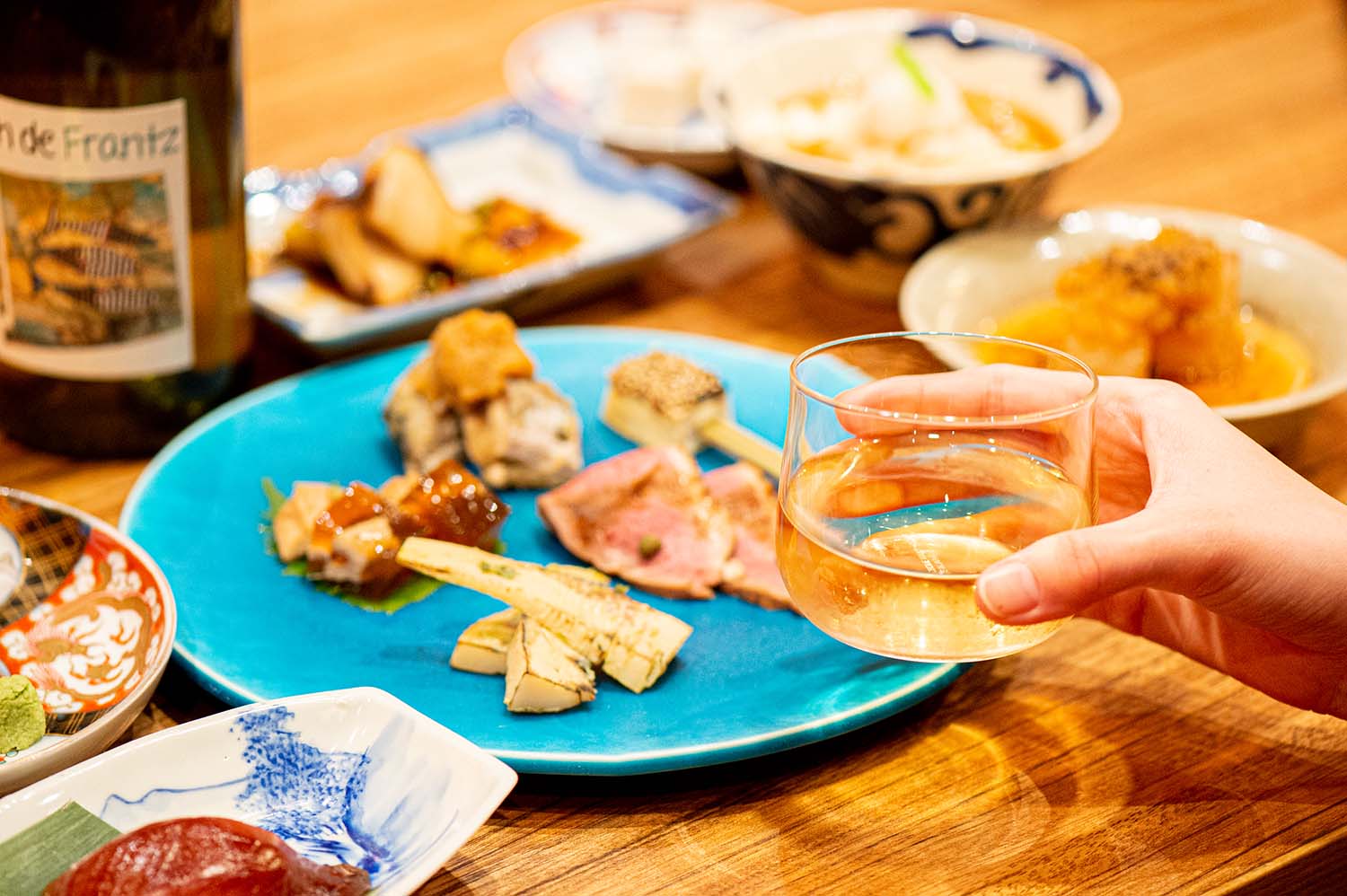
How to eat Edo cuisine | Experience natural wines paired with the tastes of Edo at Namijiya
Japan’s Edo period (1603-1867) lasted over 260 years. Amidst their peaceful lives, people began to explore the joys of food, creating many exemplary dishes of Edo cuisine. To learn all about Edo cuisine, we visited the renowned Namijiya restaurant in Nihonbashi, Tokyo, which recreates dishes popular among the common people of the Edo period.
share:
Table of Contents
What is Edo cuisine?
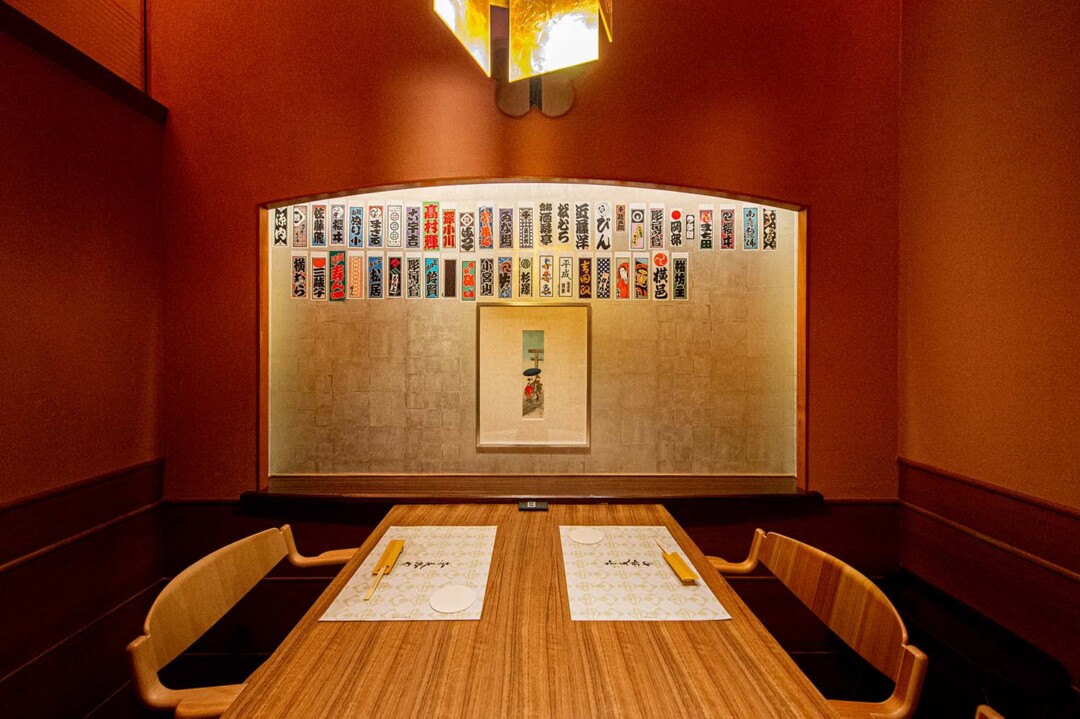
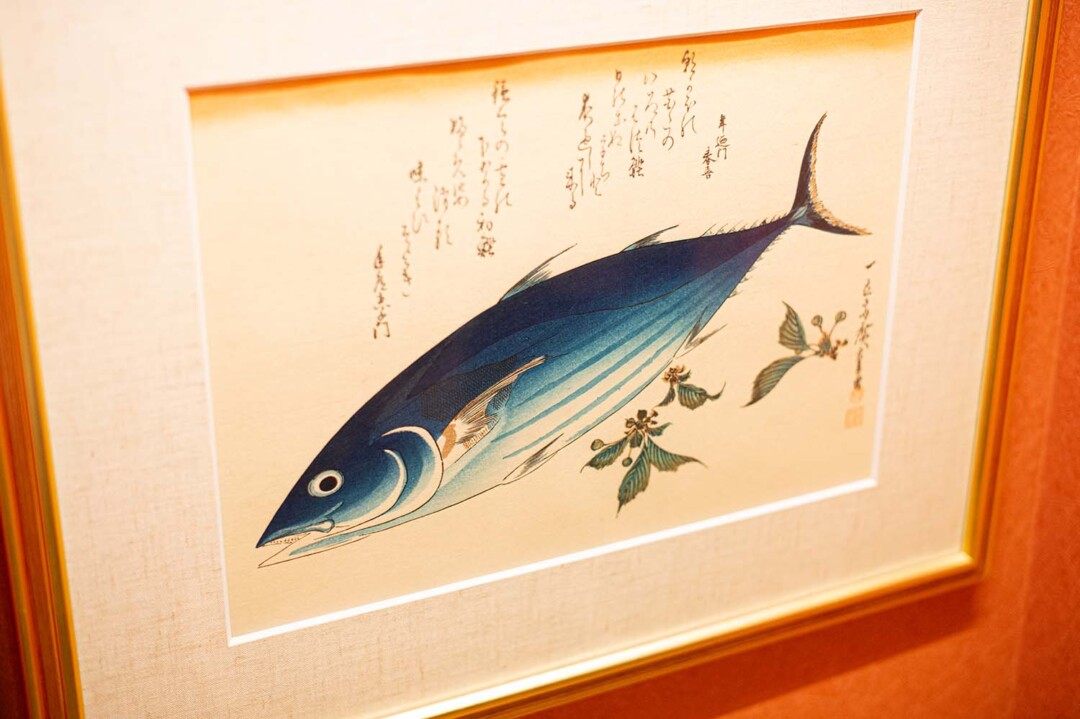
The Edo period was a time without major wars. During these peaceful days, many forms of art and entertainment unique to Japan were created, such as the kabuki style of drama and the ukiyo-e style of woodblock printing and painting. Among these cultural endeavors, much attention was given to food. With the custom of dining out first becoming popular, it is thought that this era also marked the inception of Japan’s restaurant culture.
Many cookbooks from the Edo period remain to this day, such as Tofu Hyakuchin, a compilation of 100 tofu recipes. For this article, we ordered the Edo Zanmai (“Totally Edo”) course at Namijiya, a restaurant which specializes in recreating these historical Edo-style dishes.
Edo Zanmai (Totally Edo) Course
(1)Hitosusuri (Starter Soup)

To help prepare your stomach for the meal to come, the course starts with a soup known as “hitosusuri”. The soup varies to suit each season, and on this occasion, “shijimi no sobagayu” was served. Demonstrating the knowledge of chefs of the Edo period, this soup contains shijimi (freshwater clam) extract, which is thought to be beneficial for the liver, and warms the stomach to promote good digestion.
(2)Assortment of Seasonal Dishes
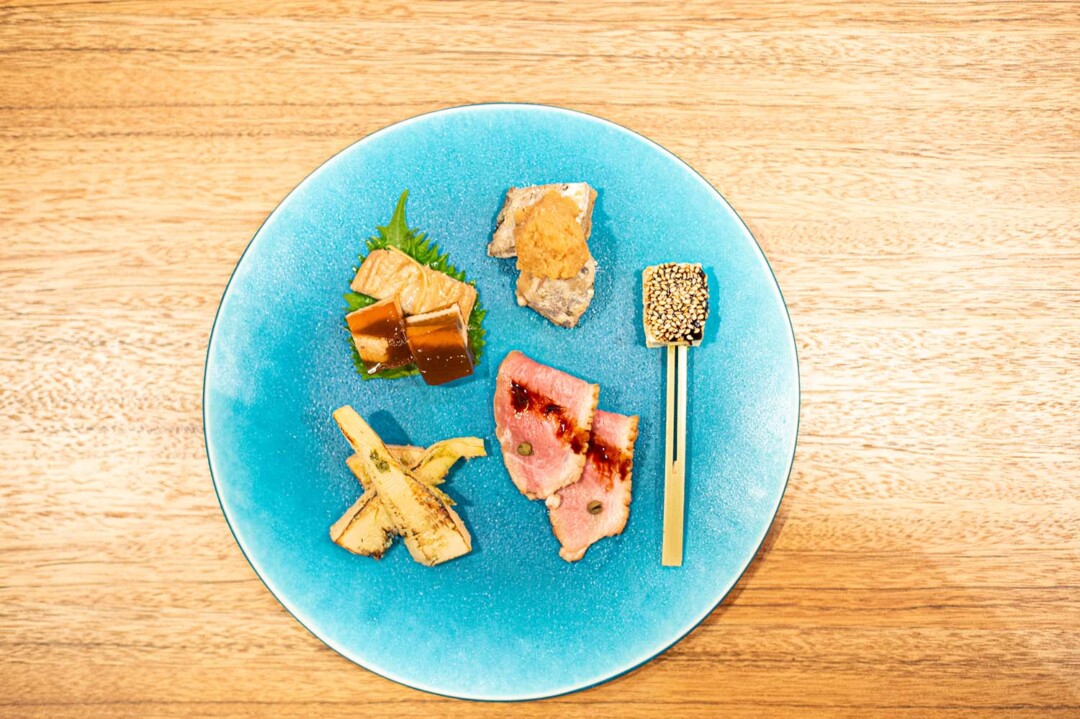
This assortment includes five items, each featuring seasonal ingredients. From the top in clockwise order are iwashi no sushini, dengaku skewered tofu, aigamo no sanshoni, takenoko kusa-ae, and anago no nikogori. Let’s take a detailed look at each.
Iwashi no Sushini – Sardines Simmered with Soy Pulp | The use of “sushi” in the name of this dish is figurative – it refers to tightly packing the iwashi (sardines) into the simmering dish. In this case, the simmering broth contains okara (soy pulp). Cooked until perfectly tender, the sardines can be enjoyed bones and all.
Dengaku Skewered Tofu | Tofu brushed with sansho miso, a condiment of sweetened miso spiced with sansho (Japanese pepper). The skewer makes it easy to eat with one hand while enjoying sake. It’s thought that izakaya (Japanese traditional pub) cuisine originated from this dish.
Aigamo no Sanshoni – Simmered Duck with Japanese Pepper | While there was a general aversion to eating meat during the Edo period, kamoniku (duck meat) is thought to have been the animal protein of choice. The tingling spiciness of sansho (Japanese pepper) accents the characteristic fragrance of duck.
Takenoko no Kusa-ae – Bamboo Shoot Dressed in Fragrant Miso | In this case, ae, which generally means to dress a food in a sauce or the like, refers to a method of concealing unwanted smells, which was called nioi-ae. During the Edo period, particularly strong fragrances were referred to as nioi (smells), giving rise to this name. To make nioi-ae dressing, pleasantly-scented aromatics, such as negi (spring onion) and kinome (buds of the Japanese pepper plant) are blended into tama miso (a mixture including miso, egg yolk, and millet).
Anago no Nikogori – Simmered Conger Eel Served Cold | Anago (conger eel) sourced from Edo Bay was an indispensable fish of Edo cuisine. Nikogori refers to preparing a simmered dish, then chilling it, broth and all, until set.
(3) Edo-style Preserved Sashimi
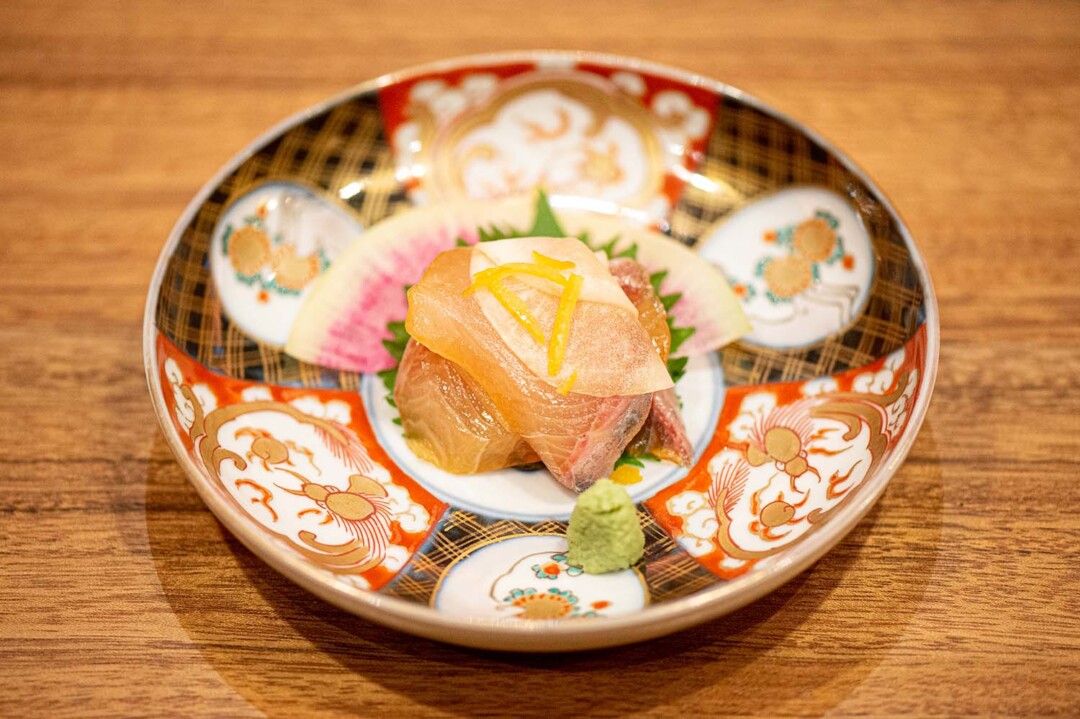
Instead of simply serving sliced ingredients, Edo cuisine is characterized by additional preparation techniques. Without refrigerators, Edo period chefs found a variety of innovative ways to prolong ingredient storage lives.
As the availability of fish varied from season to season, so did these preservation techniques, such as sujime (curing with vinegar), konbujime (curing with kelp), and shoyuzuke (marinating in soy sauce). During our course, we enjoyed a dish known as kosode-tsukuri, which featured kanpachi (amberjack) sliced in kosode-giri style.
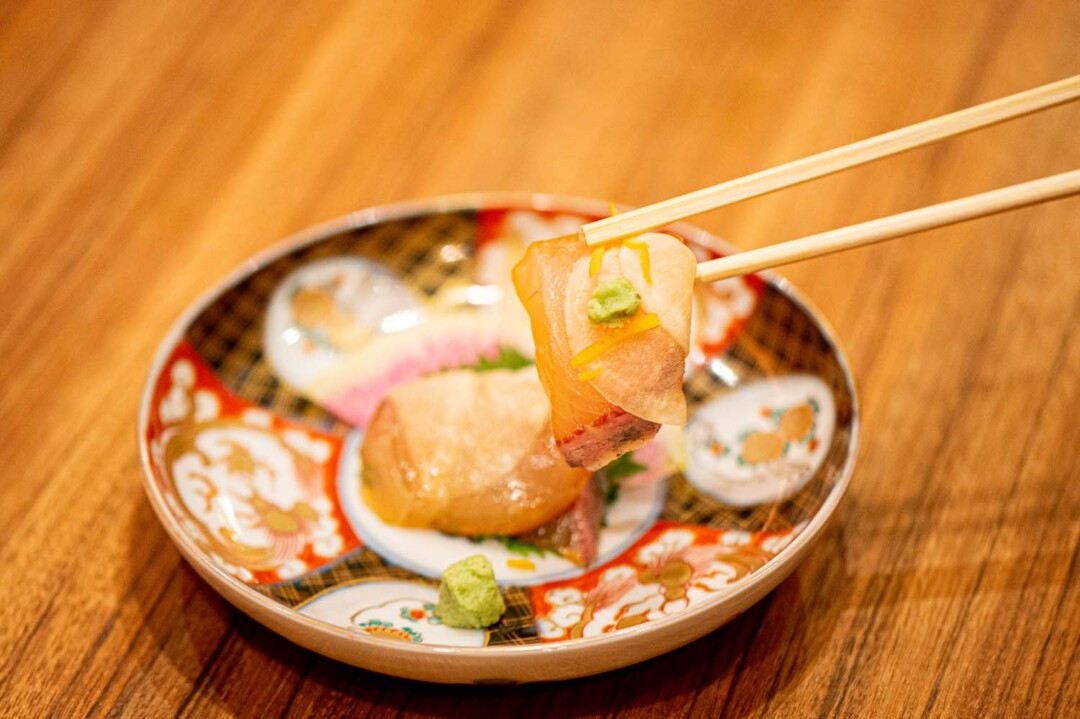
Kosode-giri is a style named for its resemblance to the sode (sleeves) of kimono worn by geisha. The fish is sandwiched between thinly sliced daikon which has been pickled in sweetened vinegar. This gracefully gorgeous presentation speaks of the aesthetic sense of the people of the Edo period.
(4)Deep-fried Daikon
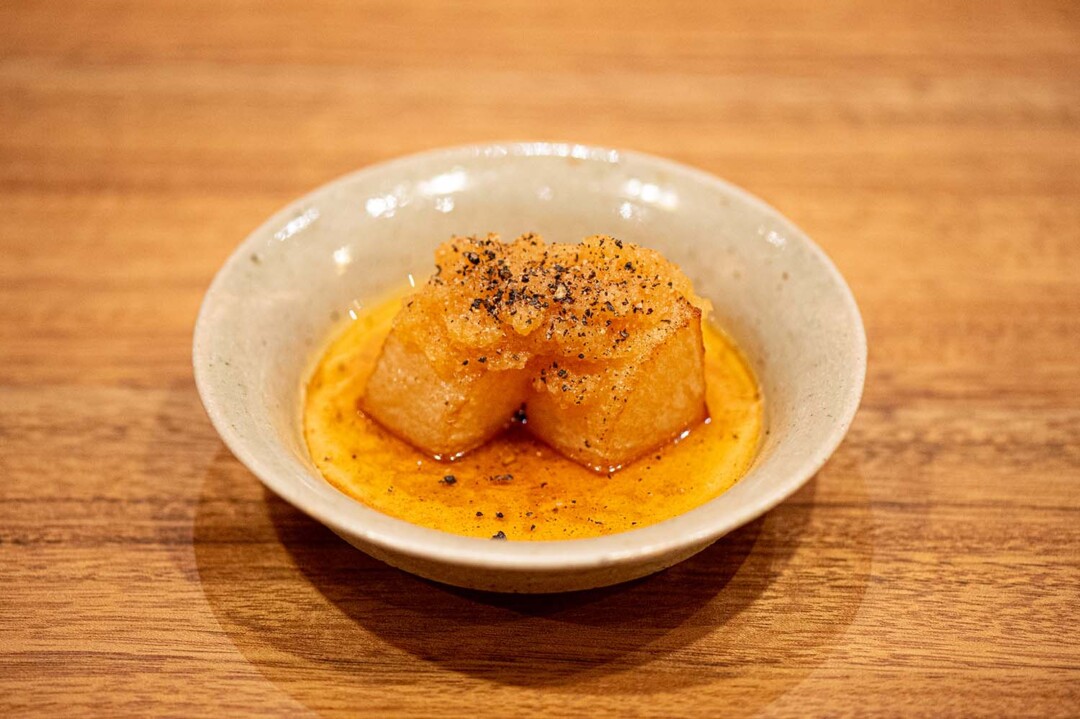
Cooking oil commanded high prices during the Edo period. In this dish, precious cooking oil was used to deep-fry relatively inexpensive daikon radish. The playful presentation of deep-fried daikon topped with grated daikon elevates this common root vegetable to be enjoyed in two ways.
The garnish of kurokosho (black pepper), , is thought to have actually been used during the Edo period. At the time, Japan was under its policies of sakoku (national isolation), however, the people of Edo are said to have used various means to source black pepper from Siam (modern-day Thailand) or Cambodia via Ryukyu and Kyushu. At the time, this luxurious spice was also known as “kuroi houseki”, meaning “black jewel”.
(5)Shinogi
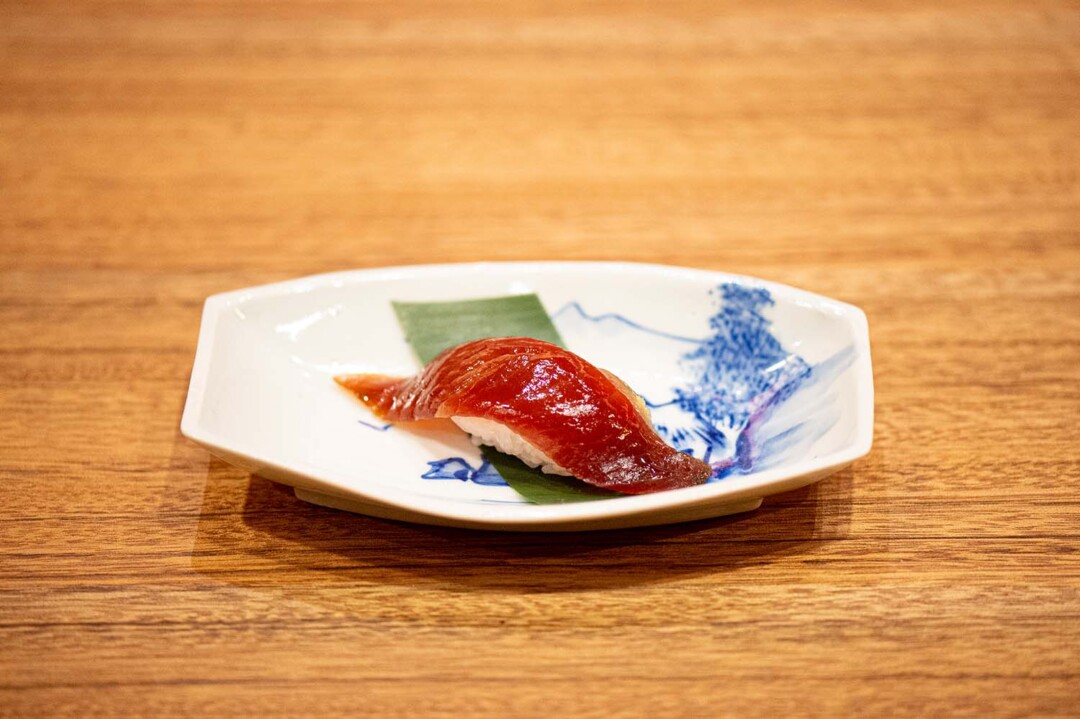
In Edo cuisine, small items using rice or soba served between courses are known as “o-shinogi”. Changing from day to day, these could include sushi, soba, and more. Today, we enjoyed a piece of zuke-maguro no sushi (marinated tuna sushi).
(6)Tamago Fuwa-fuwa
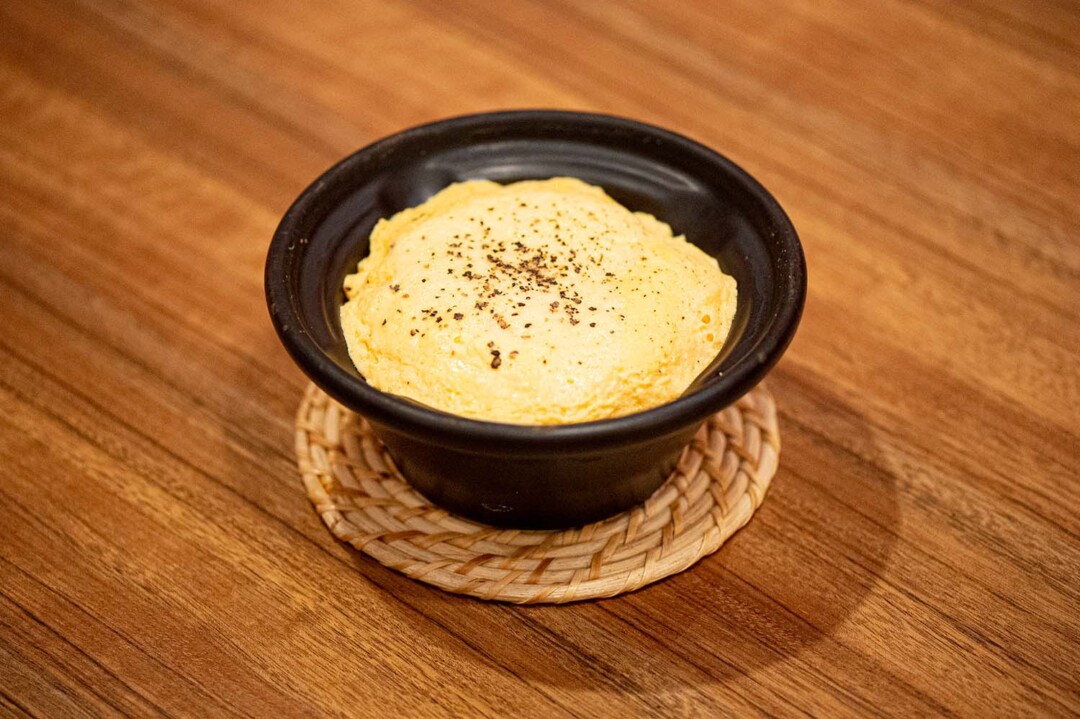
During the Edo period, eggs were a luxury ingredient and valuable source of protein. The dish of tamago fuwa-fuwa (literally “fluffy egg”) was so popular that it was listed in Okazu Banzuke, a publication which ranked foods most enjoyed by common people. It’s thought that this dish was commonly served at shukuba (traveler rest stations) in areas such as Shinagawa, where it gave a much-needed boost of energy to travel-weary visitors to Edo.
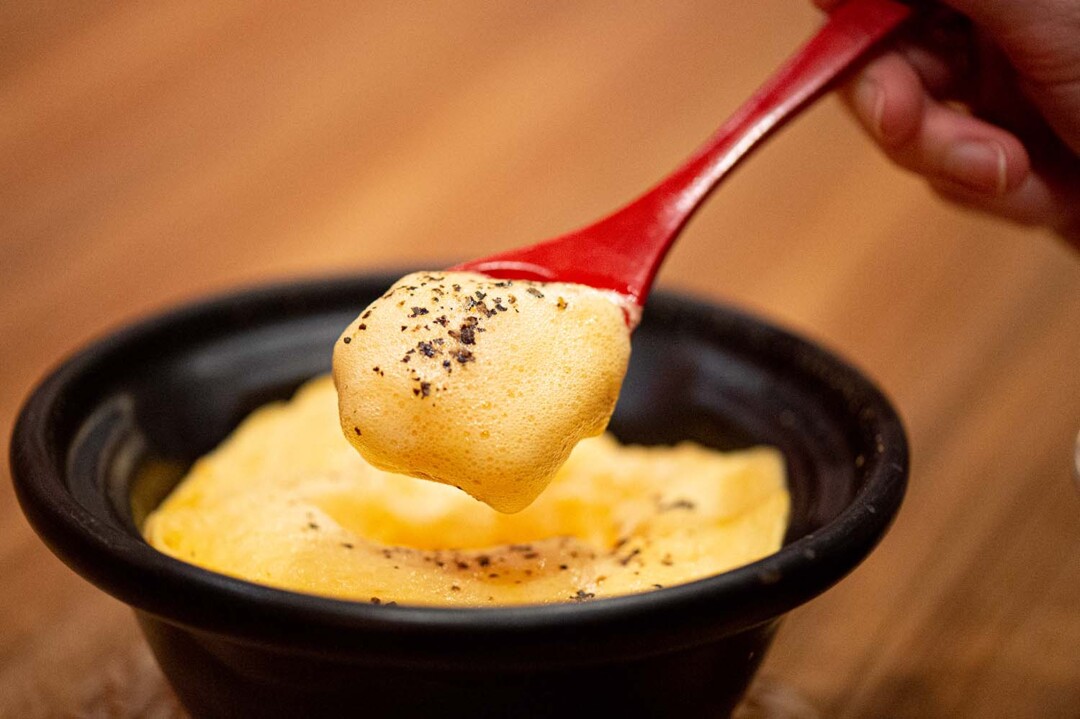
To put this dish in a modern context, you might call it an egg souffle. It’s surprising to learn that people enjoyed such fashionable dishes over 200 years ago.
(7)Kori-dofu (Congealed Tofu)

Without freezers, ice was a rare and precious commodity. In the dish of kori-dofu, tofu is encased in kanten jelly, creating the image of blocks of ice. It could be topped with kuromitsu molasses and served as a sweet, however, at Namijiya, to best appreciate the flavor of the tofu and kanten jelly, this dish is served simply with salt.
(8)Roast Seasonal Fish

Iri-yaki is the ancestor of modern-day teriyaki. It is so named from the verb iru, meaning to toast or roast dry without oil. Today, we enjoyed sawara no sansho-kikashi – Spanish mackerel seasoned with sansho (Japanese pepper).
(9)Yukigemeshi (“Melting Snow Rice”)

In Okazu Banzuke, hachihai-tofu (slices of tofu in a starchy, soy-based sauce) holds the highest rank of ozeki (champion). Yukigemeshi, literally “melting snow rice”, is hachihai-tofu with cooked rice added.
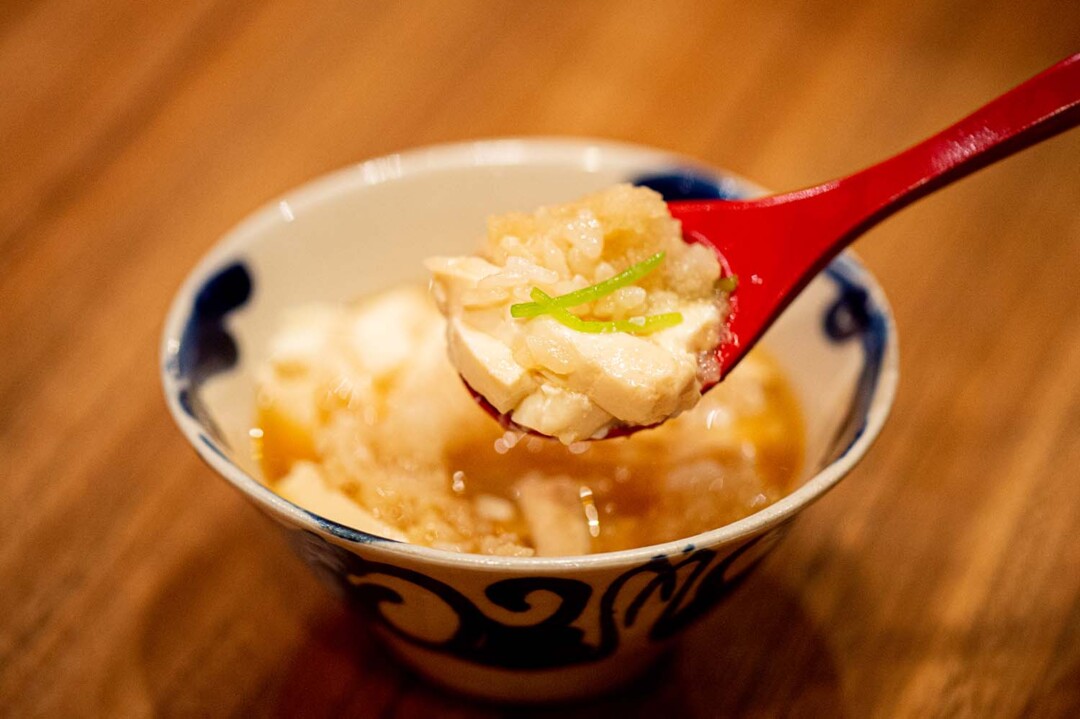
It was so named for the topping of grated daikon radish, which resembles melting snow as it comes apart and sinks into the dish.
(10)Kanmi (Dessert)
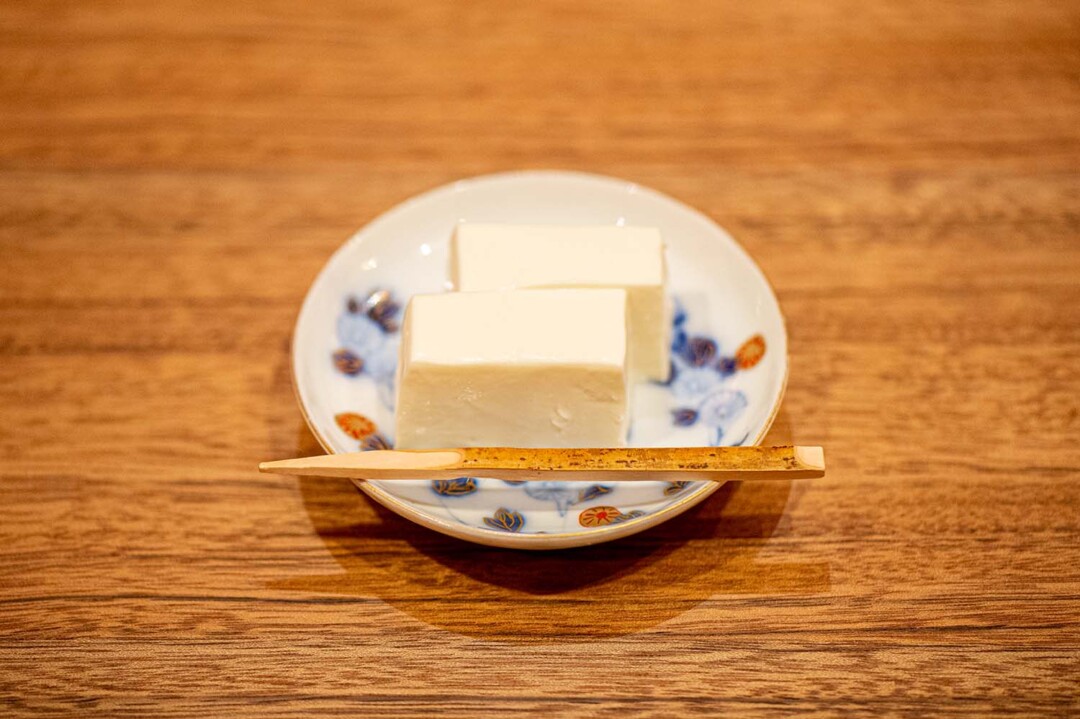
Today’s dessert was Mineoka Tofu, made from cow’s milk, and named after its point of production at Mineoka Ranch, Japan’s first dairy ranch. With a rich, luscious mouthfeel and sweetness, you might call this an Edo-style panna cotta.
Recommended single dish
(1)Henpongan (Miso-marinated Beef)
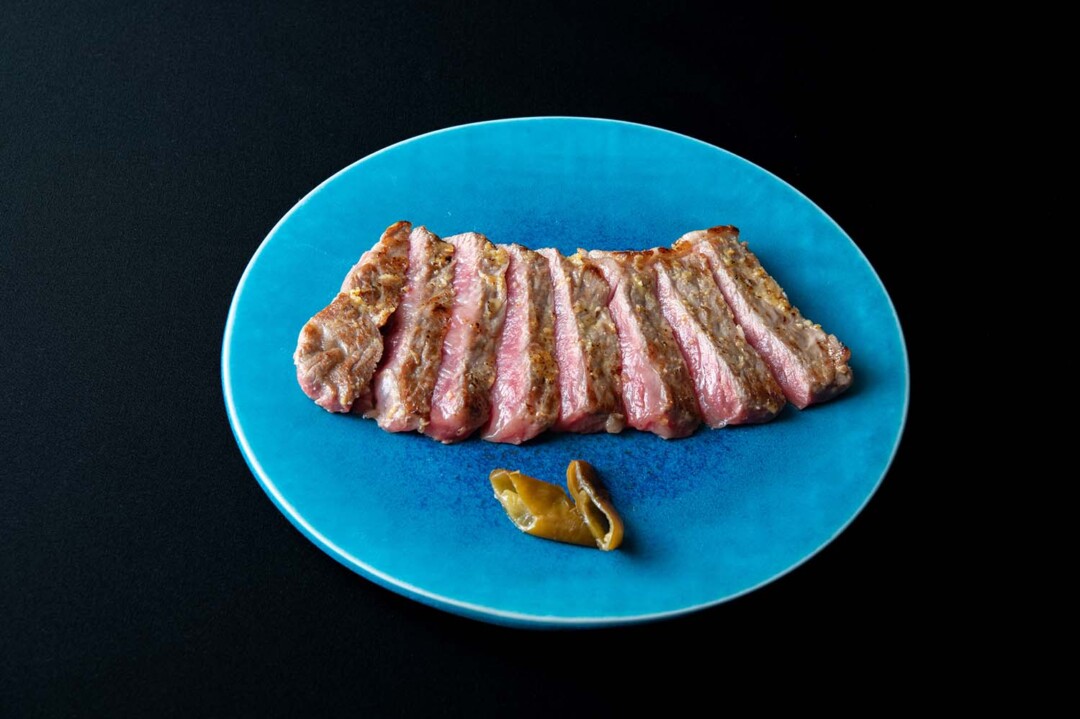
In the Edo period, it was forbidden to eat the meat of four-legged animals. However, the Hikone Domain was uniquely allowed to kill cattle for meat, and is said to have presented henpongan, a dish of beef marinated in miso, to the shogunate and feudal lords for its medicinal value. It’s said that when eating the meat of four-legged animals, they used secret euphemisms such as momiji (literally, “red maple leaves”) for venison and ketobashi (literally, “kick”) for horsemeat.
(2)Kirazumabushi
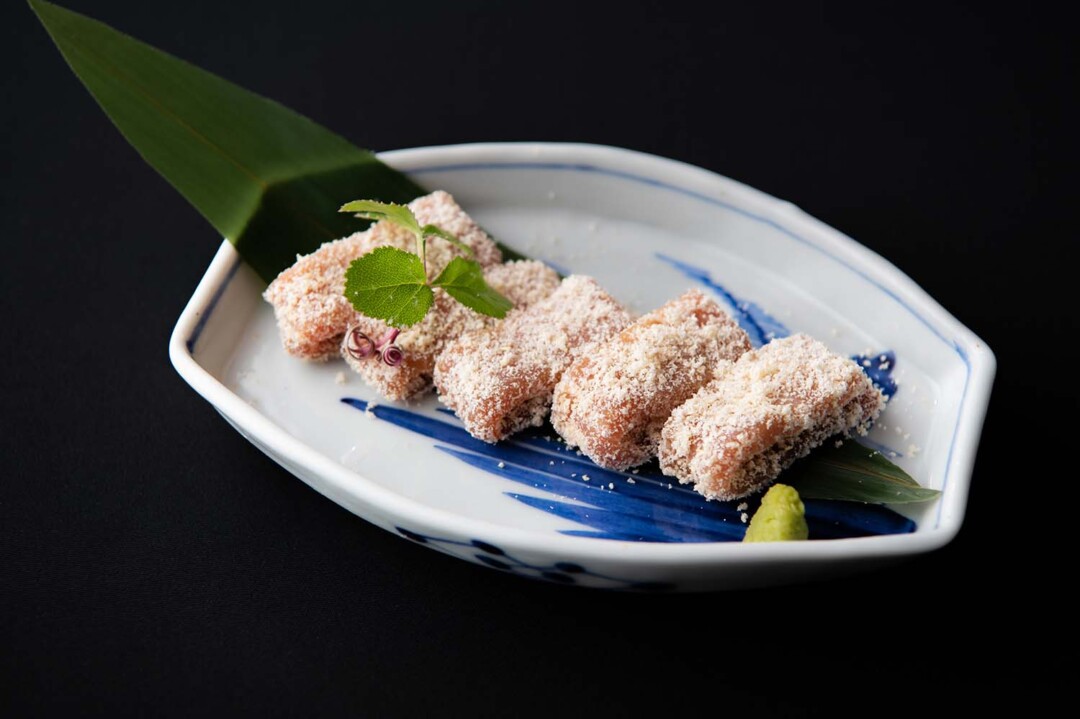
This is a dish of cured tuna sprinkled with kirazu, another word for okara (soy pulp). In the Edo period, before the invention of refrigerators, the opportunity to eat raw toro (tuna belly) was rare indeed – it was mostly served cured. The addition of kirazu transforms plain sashimi into an elegant dish.
(3)Try the traditional oyakodon of Tamahide
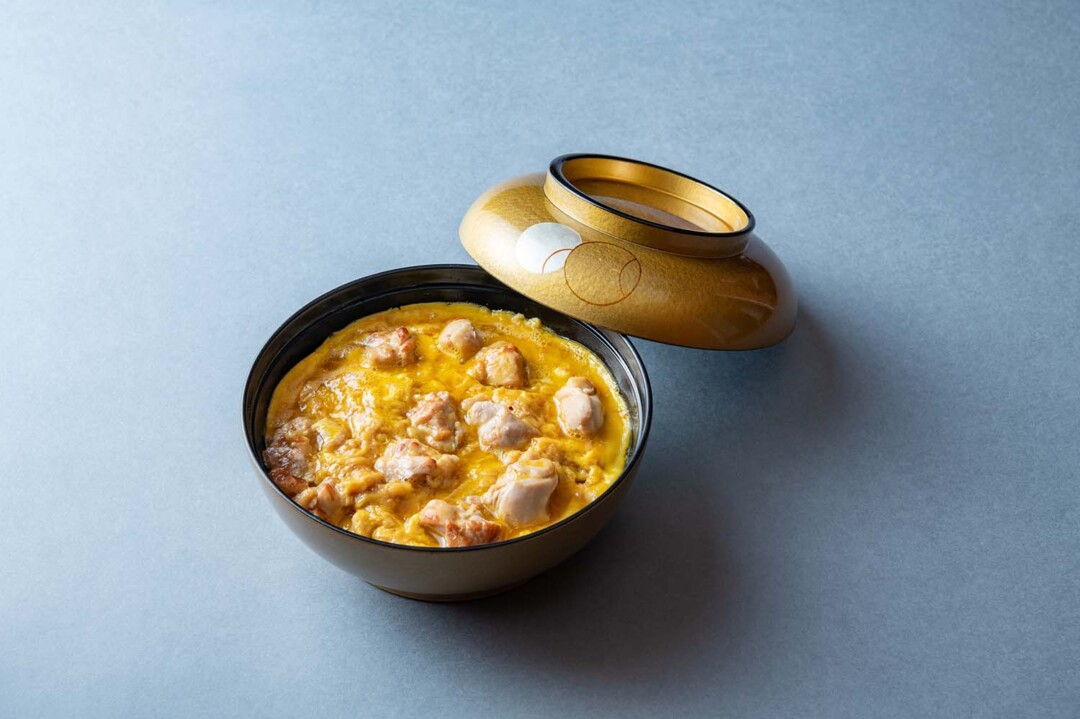
Tamahide, a chicken specialty restaurant which was founded in 1760 (year 10 of Japan’s Horeki era), is renowned for traditional oyakodon – a classic Japanese comfort food of chicken and egg on rice.
Tamahide is currently building a new restaurant, and while closed, their chefs and noren (entry curtain which displays the business name) are temporarily stationed at Namijiya. It’s said that oyakodon evolved from torisuki (chicken sukiyaki), from the practice of finishing the meal by adding egg and steamed rice to the remaining broth. Please take this opportunity to savor and experience oyakodon in the traditional style!
Edo cuisine paired with natural wines
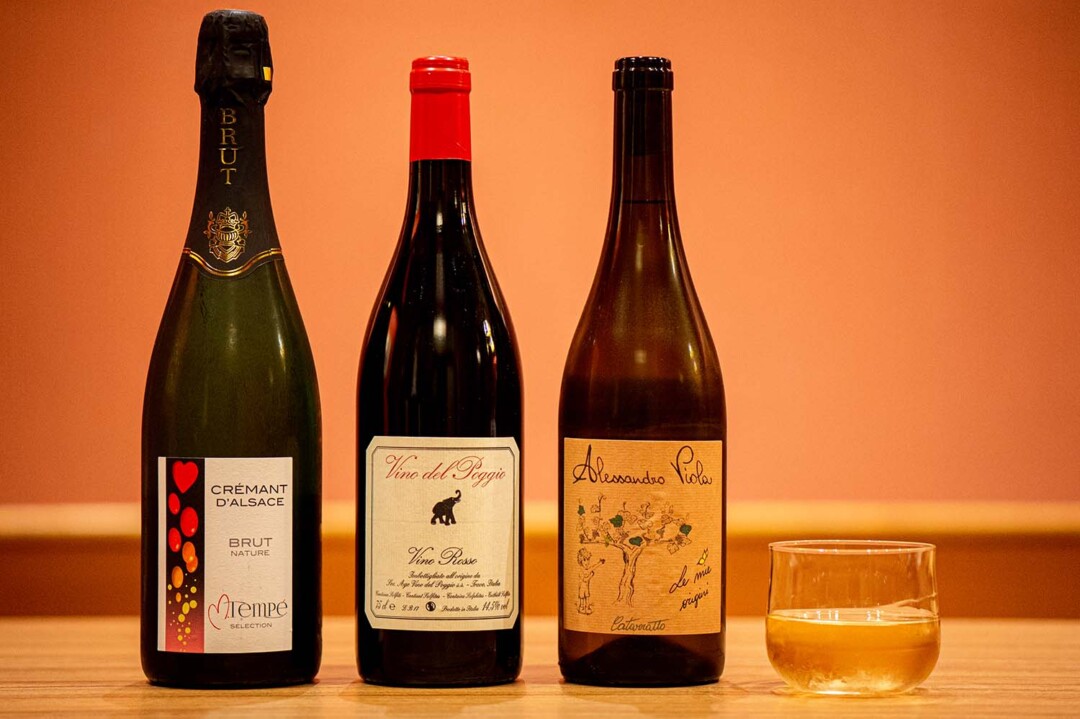
Edo cuisine can be considered the starting point of modern Japanese cuisine. As a beverage pairing, of course, nihonshu (sake) immediately comes to mind! You certainly wouldn’t go wrong with sake, but Namijiya offers an innovative proposition to enjoy this traditional cuisine alongside natural wines. The restaurant carries a wide selection of natural wines, including white, red, rosé, and sparkling varieties. As you enjoy organic, additive-free Edo cuisine, please try an organic beverage alongside!
Modern Tokyo brings together people from throughout Japan, and all around the globe. However, during the Edo period, the history, ways of life and spirit unique to Edo (Tokyo) shaped all manners of culture, including cuisine. Our experience today brought a profound realization of our connections to many generations before. We hope that you might also take this opportunity to experience the culture of our ancestors through authentic Edo cuisine at Namijiya.
Located in Nihonbashi, Tokyo, this restaurant specializes in Edo cuisine, and serves organic dishes free of chemical seasonings. Ingredients are carefully selected with the seasons, meaning that new flavors await at each visit. Pair authentic Edo cuisine with a wide range of beverages, including sake, shochu, and natural wines.
*The information is based on the time of reporting or creation, and may differ from the current situation.
tags:
share:










